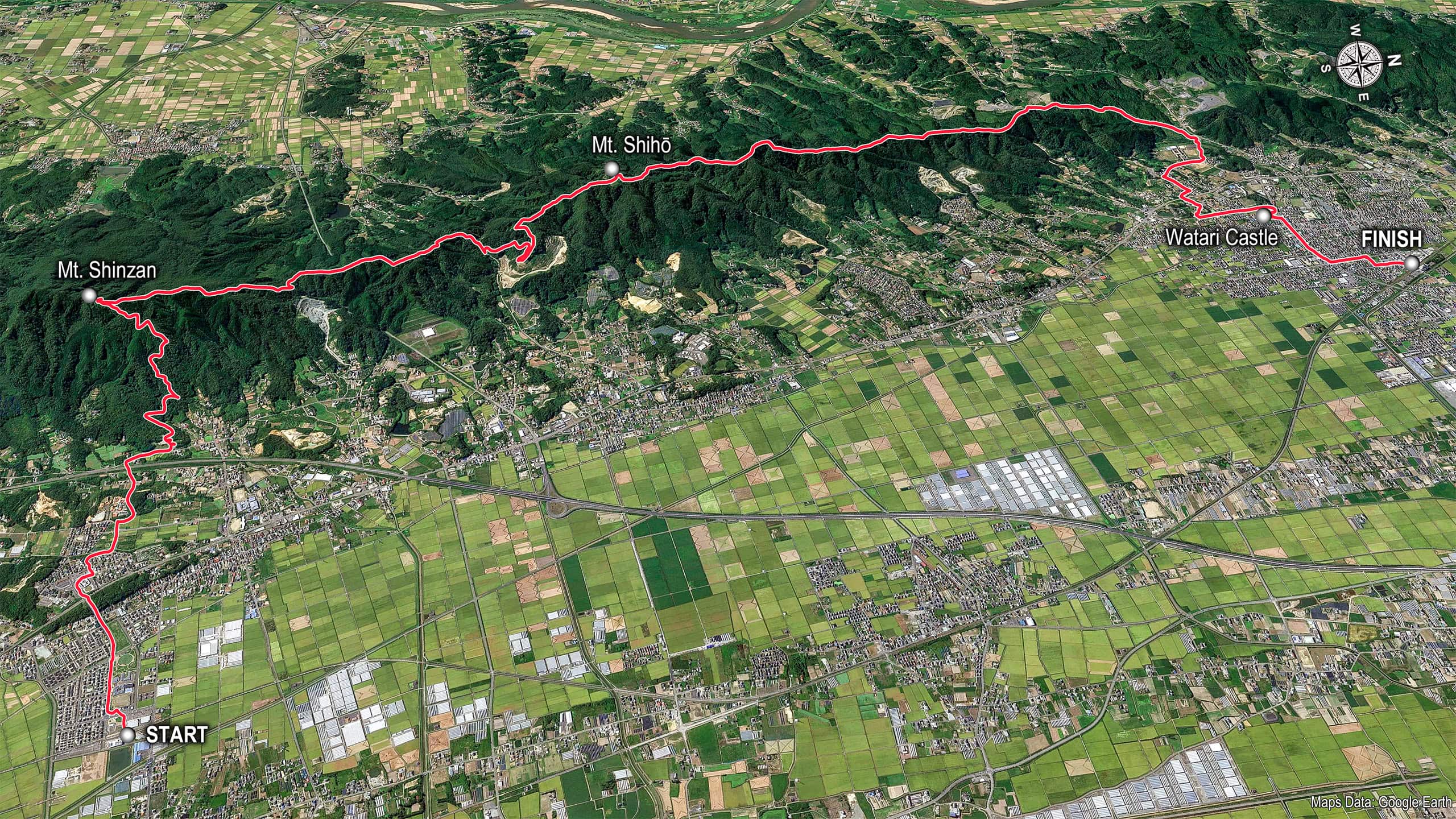
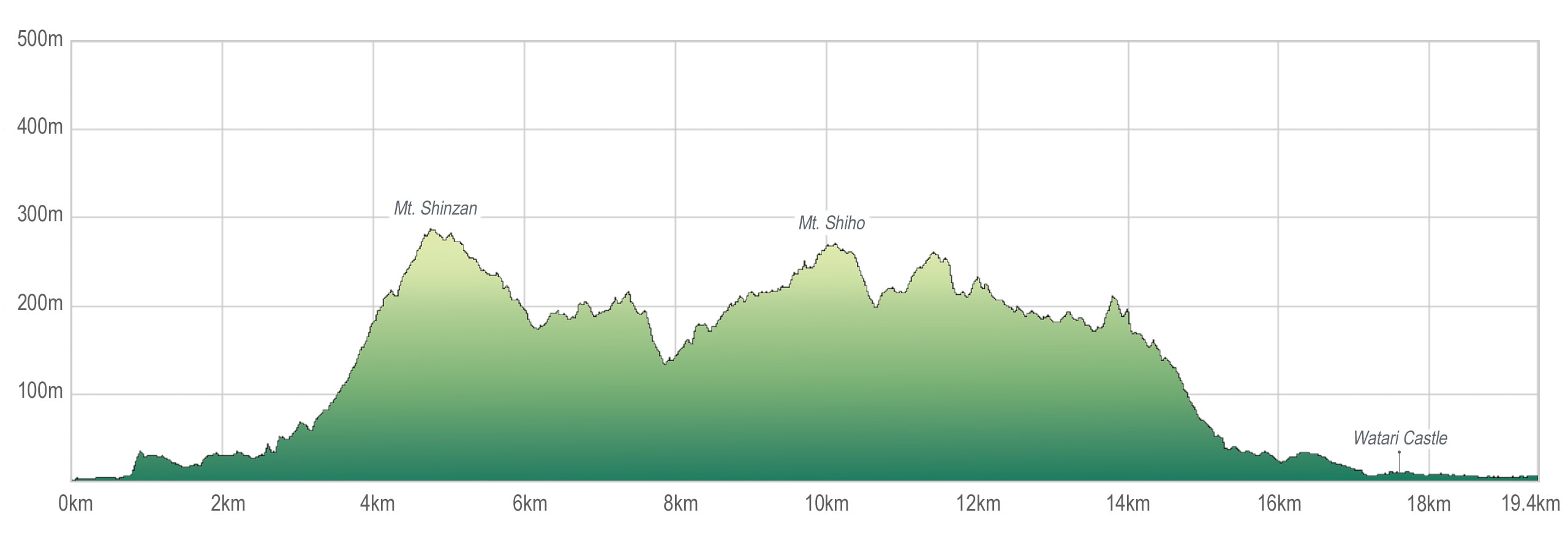
We checked out Hotel Grado ホテルグラード新地, conveniently located right in front of Shinichi station, at 8:15 am to safely make it to the 8:30 train.
Our two-night stay at the hotel was pretty comfortable and satisfying. Besides the services guests expect from standard business hotels anywhere in Japan, such as a free microwave and coin laundry, the best thing for us was a spacious public bath. It was a separate building connecting to the hotel with an indoor passage for hotel guests, while visitors only for the taking bath enter from another entrance. A casual self-service style restaurant was also inside the public baths, so we had our first night’s dinner there. All the dishes we ordered were unexpectedly so good for their price.
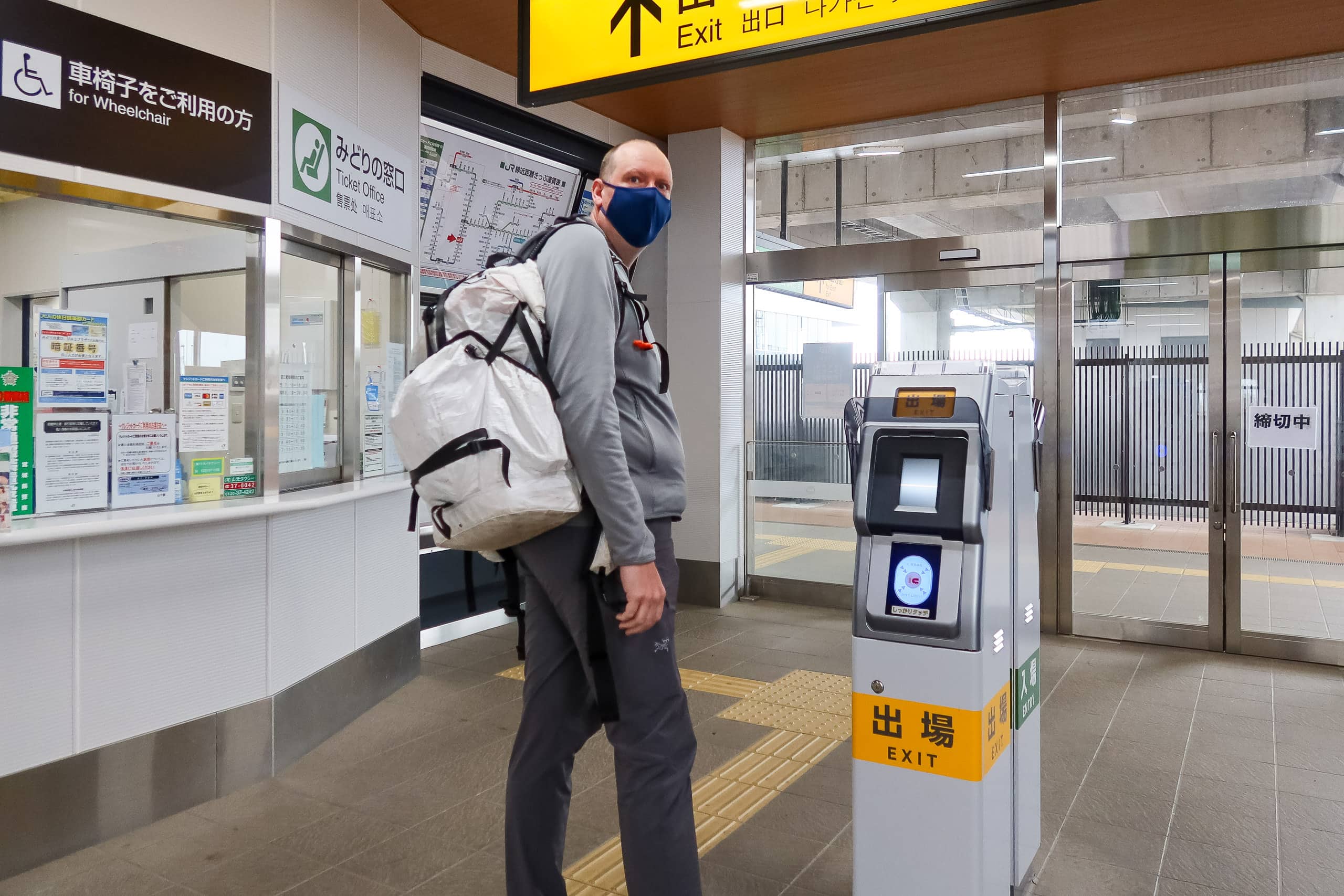
The first few days of the MCT northbound route have good connections to the stations on the JR Joban line 常磐線. Trains run more frequently than we thought. That gave us an excellent alternative option during our hike-planning stage; staying at a lodge multiple nights and using trains to and from each day’s start and goal. An advantage of this way is that we don’t have to carry the full gear every day.
We always try to minimize the extra travel by public transportation between lodges and the MCT route. Of course, simply having different lodges on the route every night is the best, and we can focus only on going forward. But after looking up various map tools, we found accommodations did not always exist at convenient locations for our average daily distance along the MCT route. That is, unfortunately, a very common challenge at almost all long-distance trails in Japan. The Shikoku Pilgrimage and Kumano Kodo routes are exceptions, but their accommodation situations have been not so lucky these days…

Two train stations from Shinichi, we were back at Yamashita station. There was a large grocery store and a few other shops in front of the station, but none was open on such an early morning. So, we quickly returned to the town office of Yamamoto 山元町 to get back on the MCT route.
Since we knew we would be in the shopless mountains most of today, we researched where we could get food and drinks.
The station-front grocery store opens only at 9:30 am. Google Maps didn’t find any stores along the MCT route between the station and the trailhead of mountains. So, we got some bread (lighter-weight food) last evening when we bought our dinner at a convenience store. There were many vending machines around Yamashita station. I got a bottle of tea just in case we could not find any other vending machines on the way to the mountain trailhead.


With the help of MCT signs and the GPS, through sleepy rural neighborhoods in weekend silence, we arrived at Shinzan sanroku shonen-no-mori 深山山麓少年の森, a family-friendly nature park located at the mountain-foot of Mt. Shinzan 深山.
Around the park information center, a big group of little kids and toddlers gathered with their moms, carrying tiny backpacks almost as big as their upper bodies.
A park information and illustration map board showed multiple trails from the park to the top of Mt. Shinzan. One of them would be the first part of our first multi-peak mountain traverse on the MCT.
The information center had bathrooms, but note that all toilets were Japanese style. There was also a vending machine, so I didn’t have to get my tea at the train station, not to mention carry an extra 600g. If only I had known…


We quickly got ready and hurried up to the trailhead as the little kids were cheerfully skipping in the same direction. We didn’t want this army of excited kids running around and screaming in our front all the time on the mountain trail. Thankfully, the moms didn’t let the little ones go fast and out of sight.





The Mt. Shinzan trail was more like a forest path, with very mild ascend. Otherwise, the toddlers would not have been here. The trail was well-marked with sign plates and arrows at every folk. Even though most signs were written in Japanese, the familiar MCT stickers and newly-seen MCT logo-printed blue-green tapes were tied around the sign poles and hung from tree branches, very easy to follow.
A small mountain spring crossed the trail, and a steel cup was placed there for the convenience of hikers.







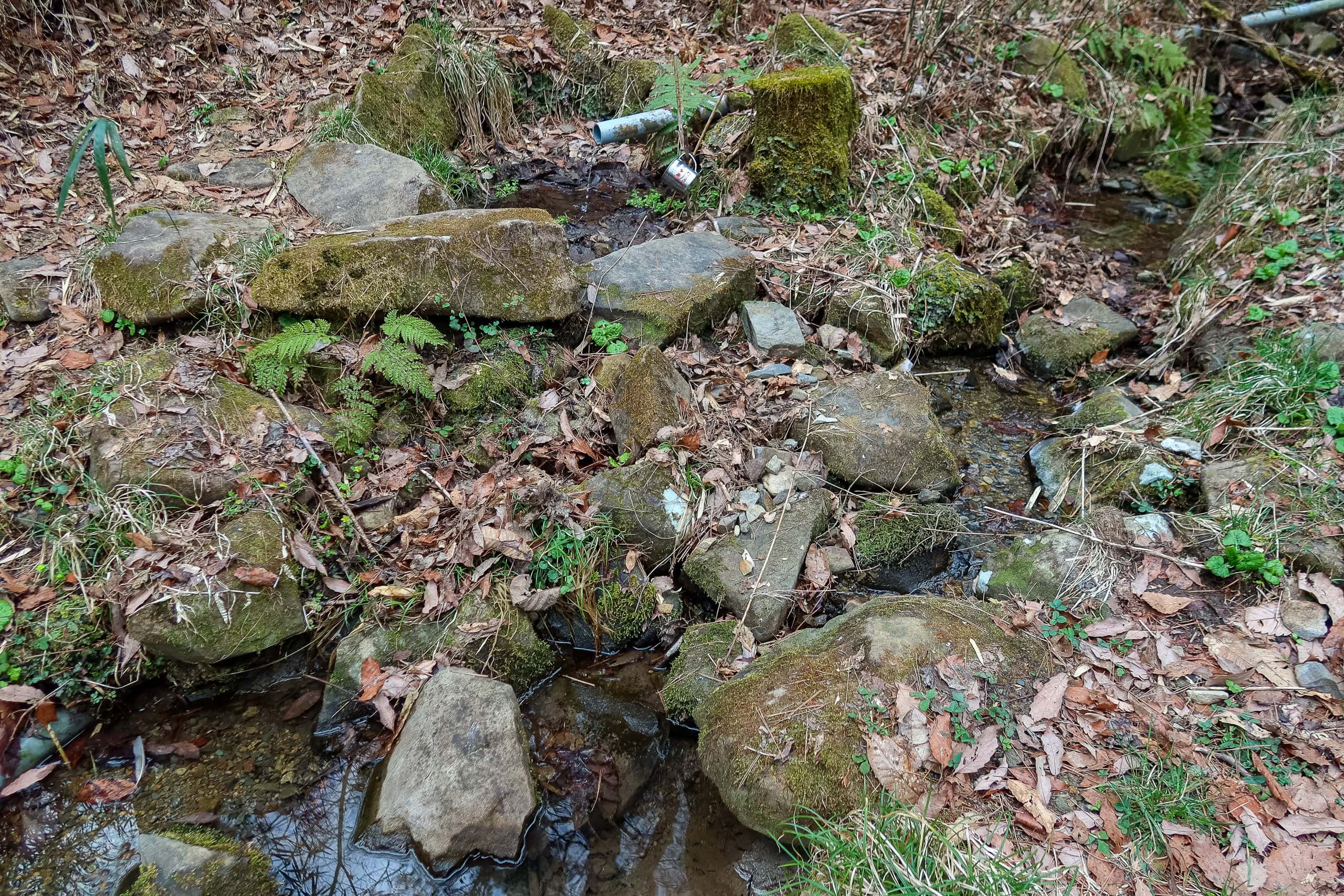

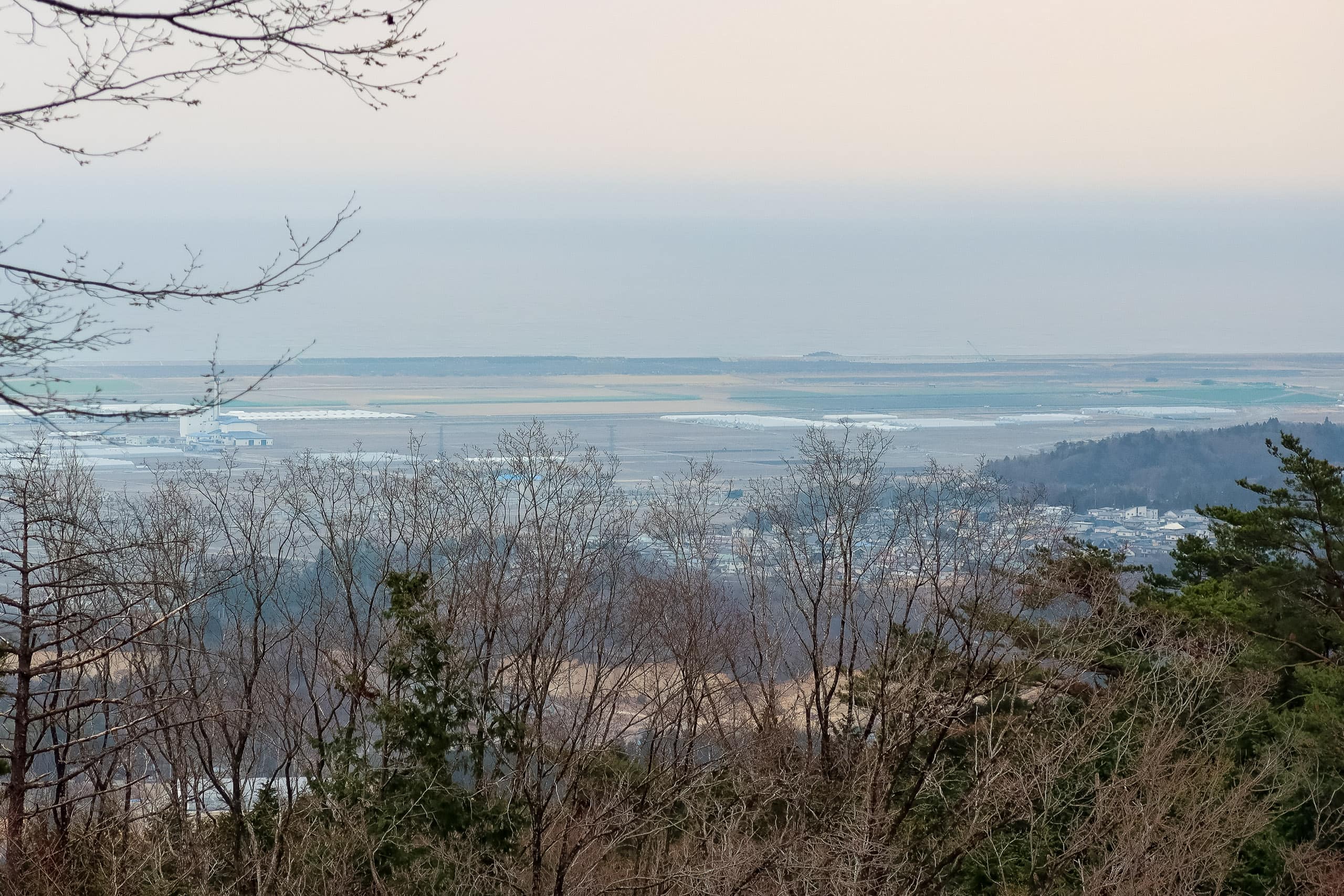
Without sweating at all, we got to the top of Mt. Shinzan, again, 360 degrees open for great views in every direction. A few other hiker groups were at the picnic tables and benches for tea breaks. Like Mt. Karou yesterday, this mountain seemed to hold the local hiking staple position for the people of Yamamoto town.
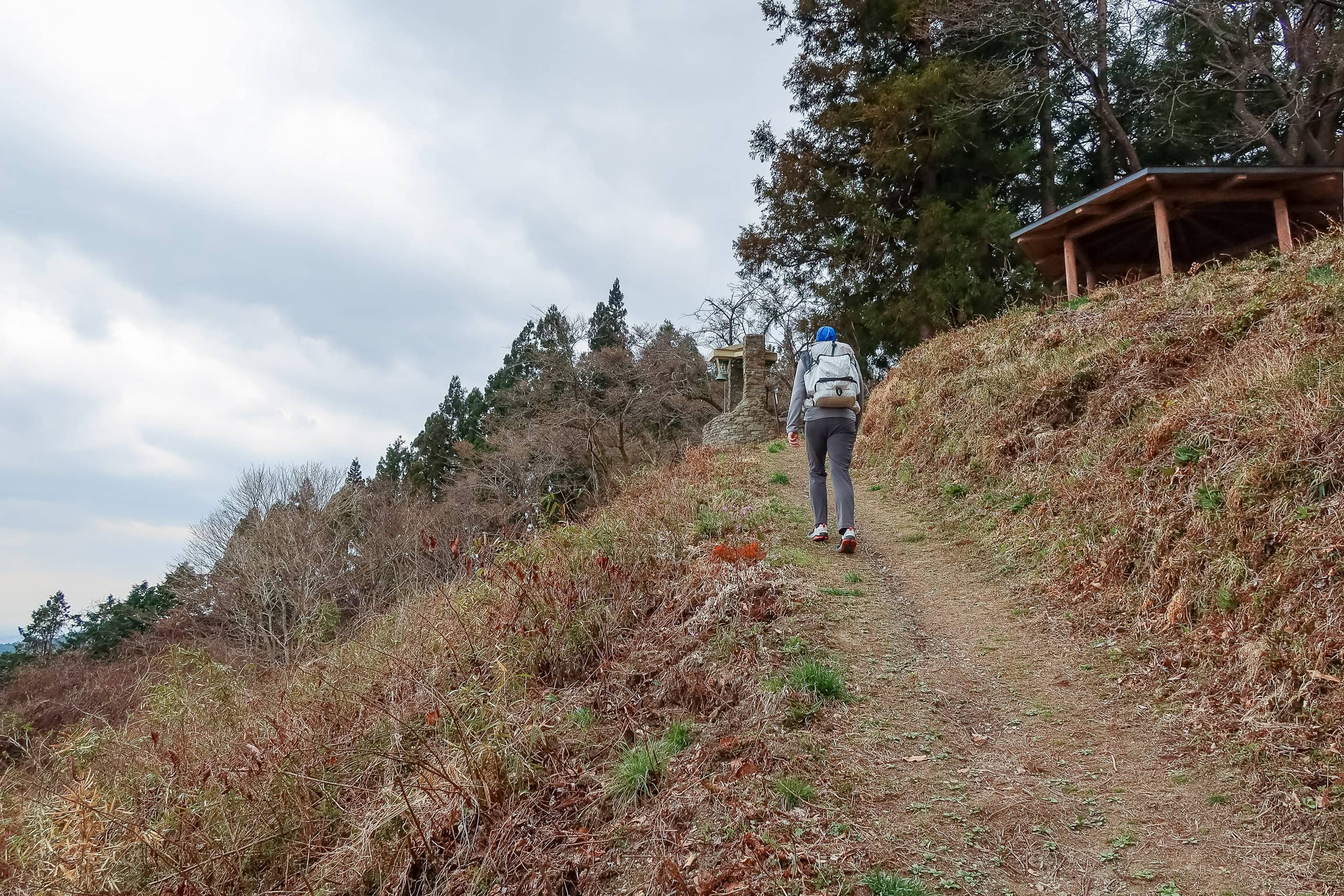




Knowing Mt. Shinzan was only the beginning of a ridgeline traverse of over 10km and additional kilometers to reach our goal for the day, we didn’t have much time to stay there. After taking some “peak hunt” photos, we immediately resumed walking to the north on the MCT route.






There would be six peaks along this traverse. The altitude of each peak was somewhere between 200 and 270 meters, and we mainly stayed on the ridgeline with gradual and small ascends and descends.
Later I learned that the actual name of this series of these six peaks is Watari horst mountains 亘理地塁山地. I had never heard the geology term “Horst” before.









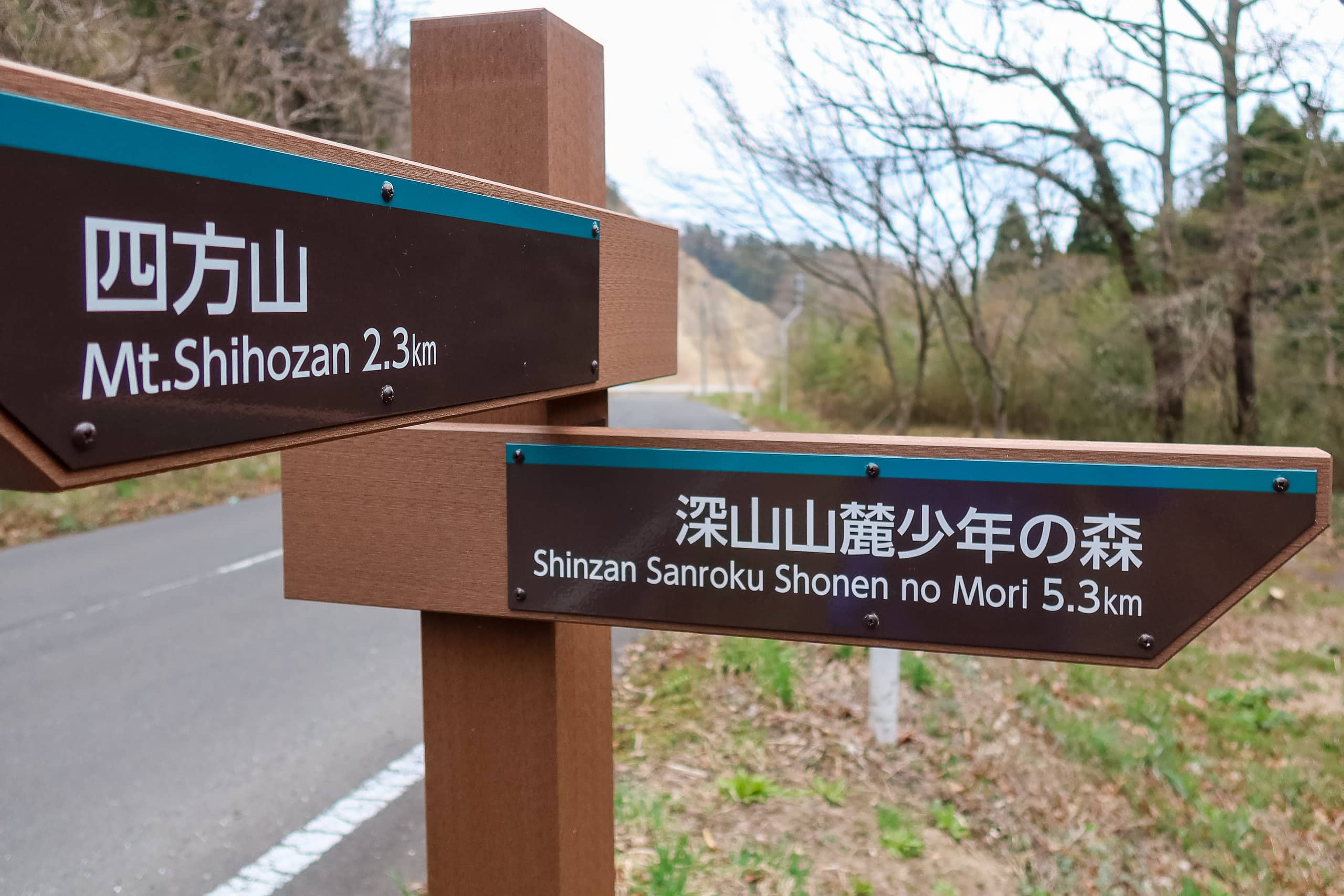



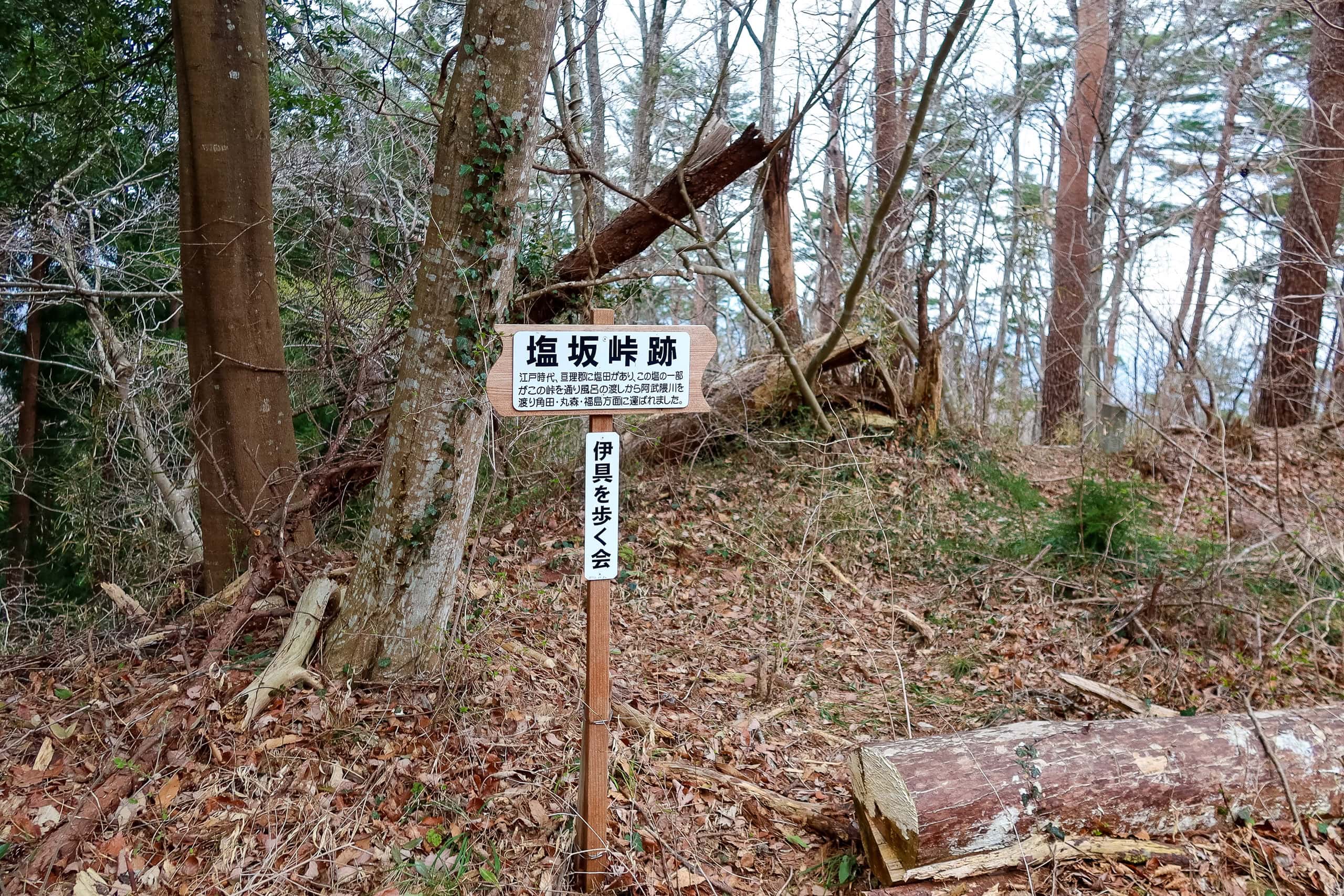

The distance from Mt. Shinzan to the next peak, Mt. Shiho 四方山, was 6km, the longest stretch between Watari horst peaks today. Since most trees were still leafless, we continuously had good views of the north side of the mountains. After the first 3.5km on a flat natural trail covered with bouncy fallen leaves and leaf mold, it turned to a 2.5km long asphalt-paved car road.
Between Mt. Shinzan and Mt. Shiho, we passed two minor peaks, not marked on the MCT official map, but we saw small plates with only mountain names but no information about altitude.
Mt. Shihō was the only peak easily accessible by car. There was a park with an observation tower and a couple of rest huts. But, unlike Mt. Shinzan, we didn’t see any hikers while having a lunch break at one of the huts. Very quiet and, under the cloudy sky, a bit creepy.



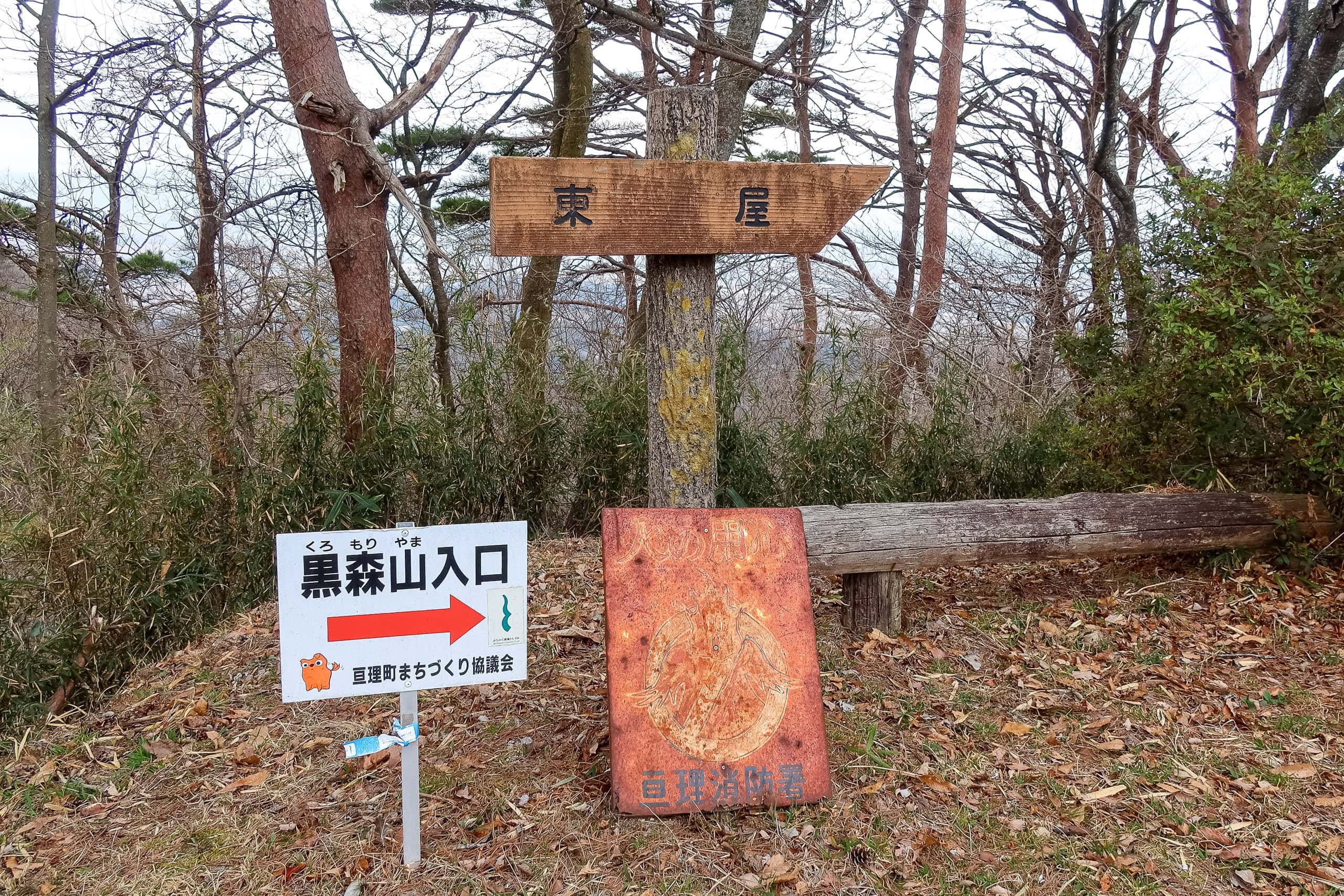
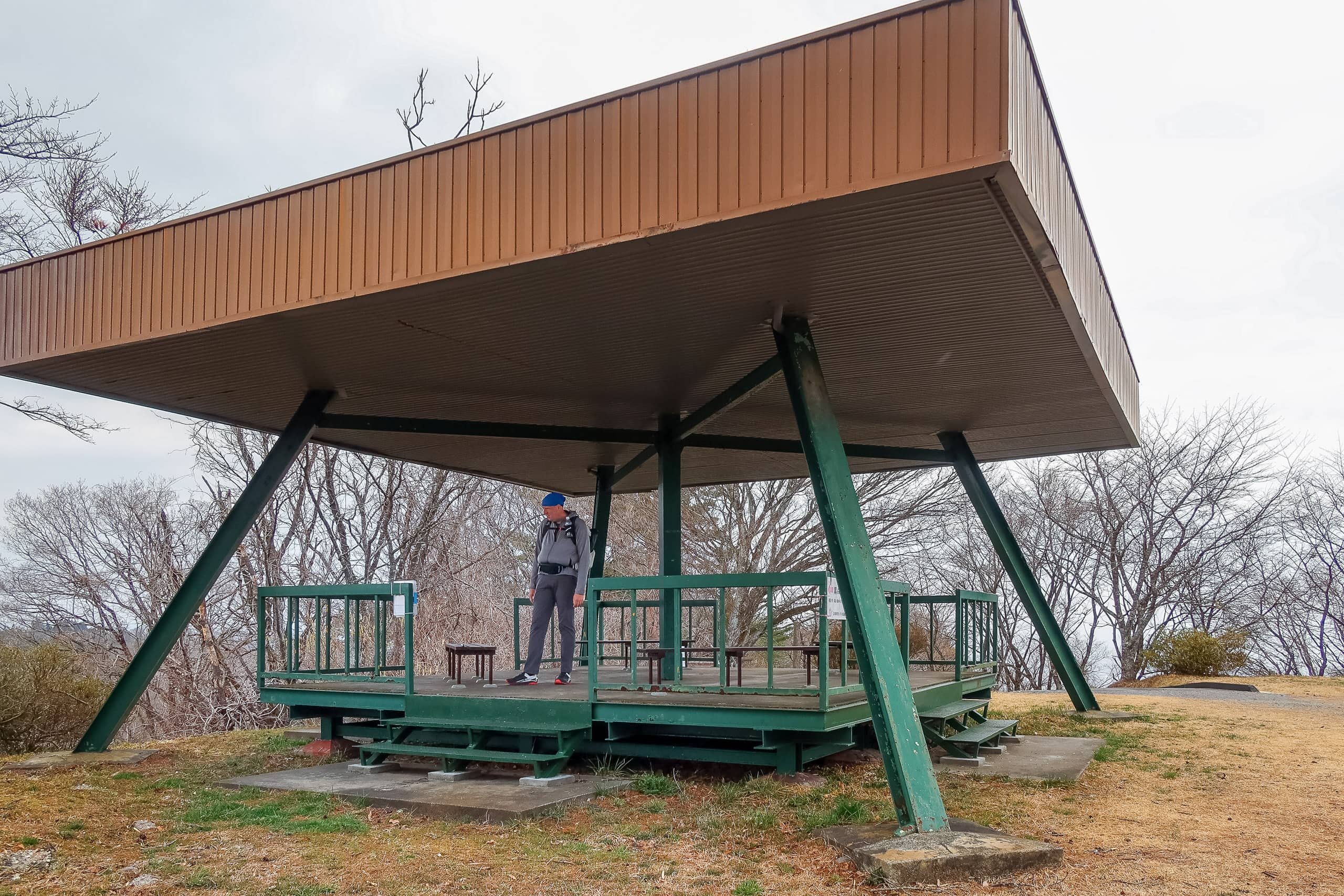


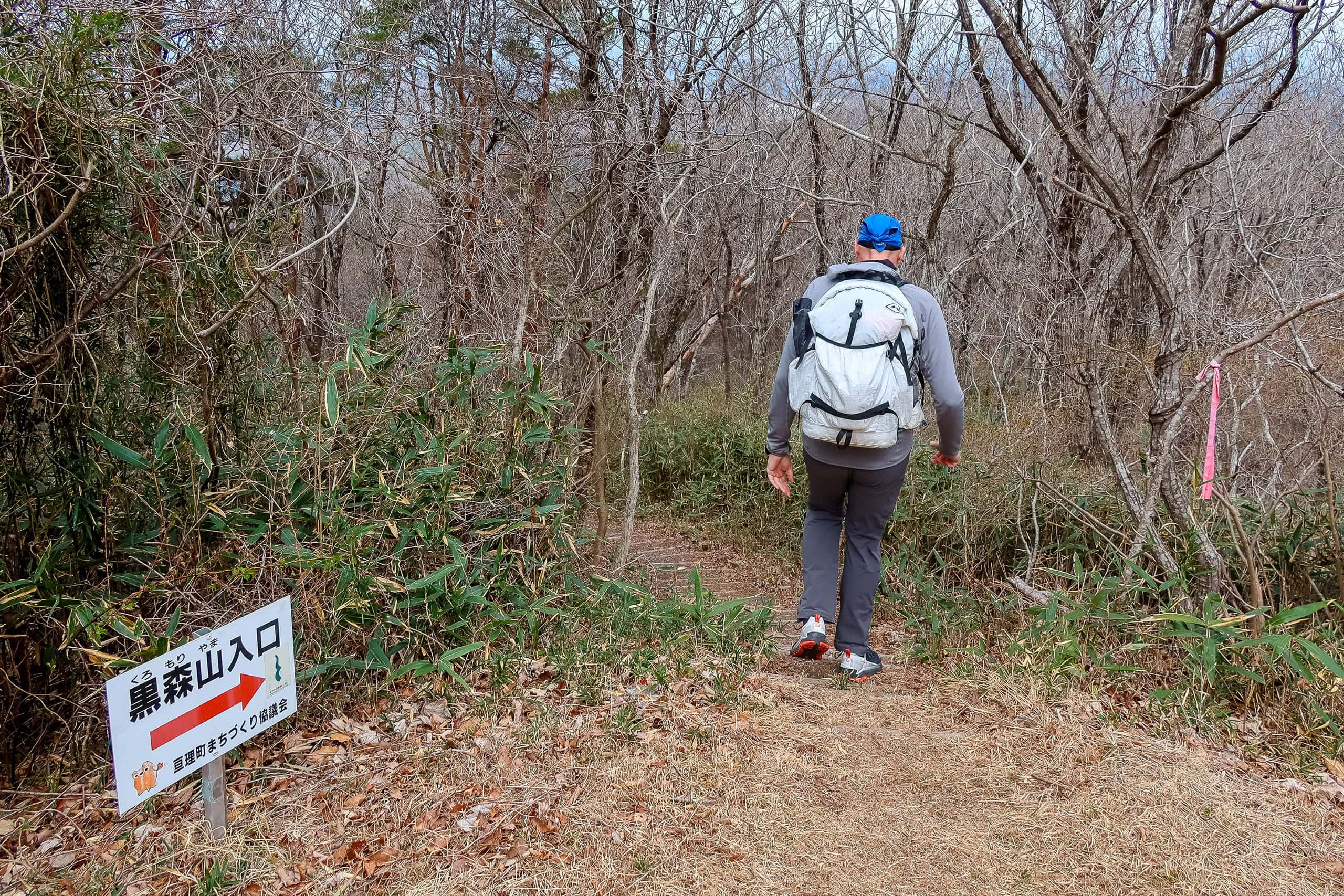


While Mt. Shinzan and the following two minor peaks had almost all broad-leaf trees, thick man-made forests of Japanese cedars and cypresses took over the rest of northern Horst after Mt. Shihō.
Overall, the 12km Watari Hurst traverse trail was an easily walkable path with many viewpoints on both sides. Still, 12km was an undoubtfully long distance, and once we were up on the ridgeline, the only escaping route in case of emergency was the drive road.
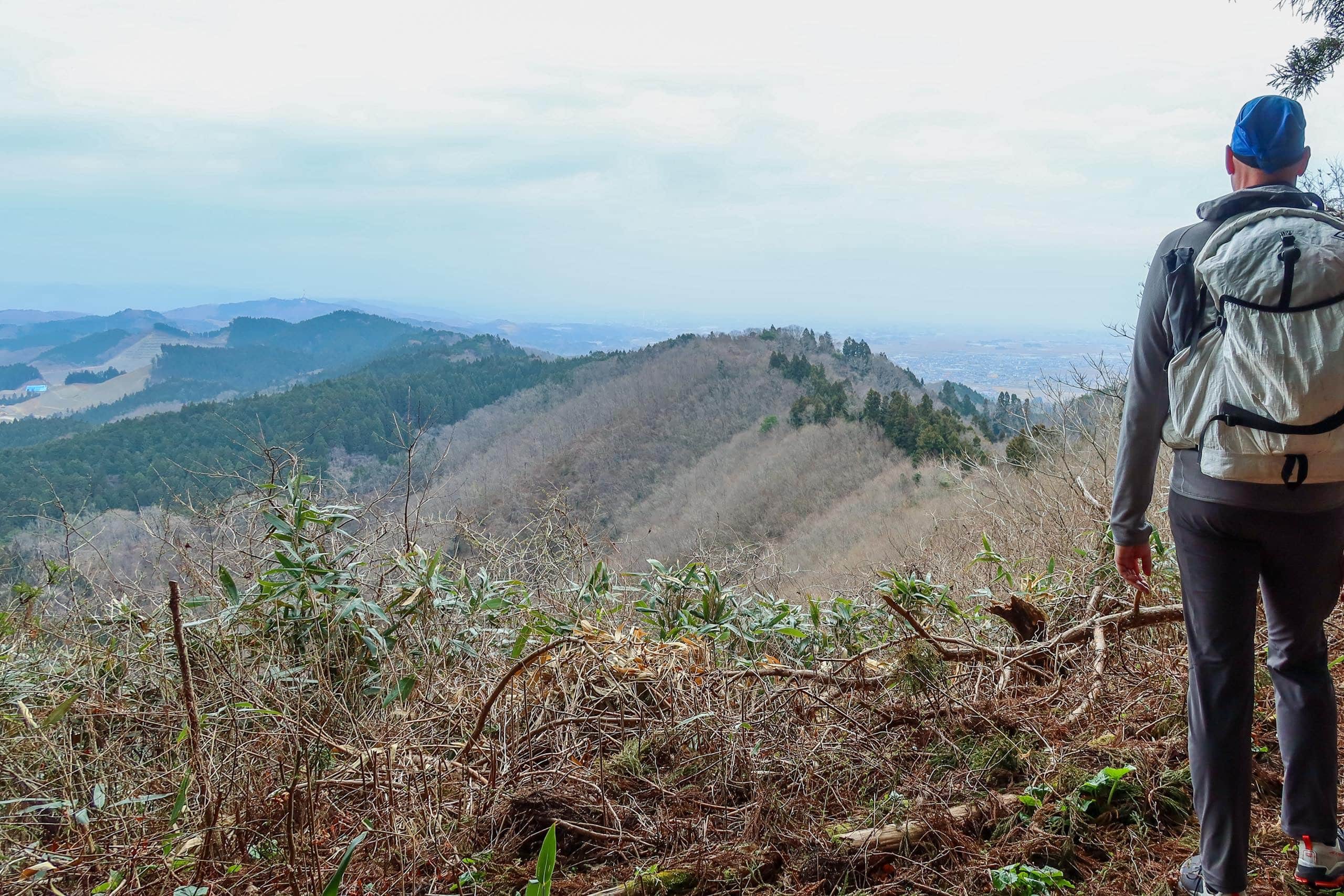


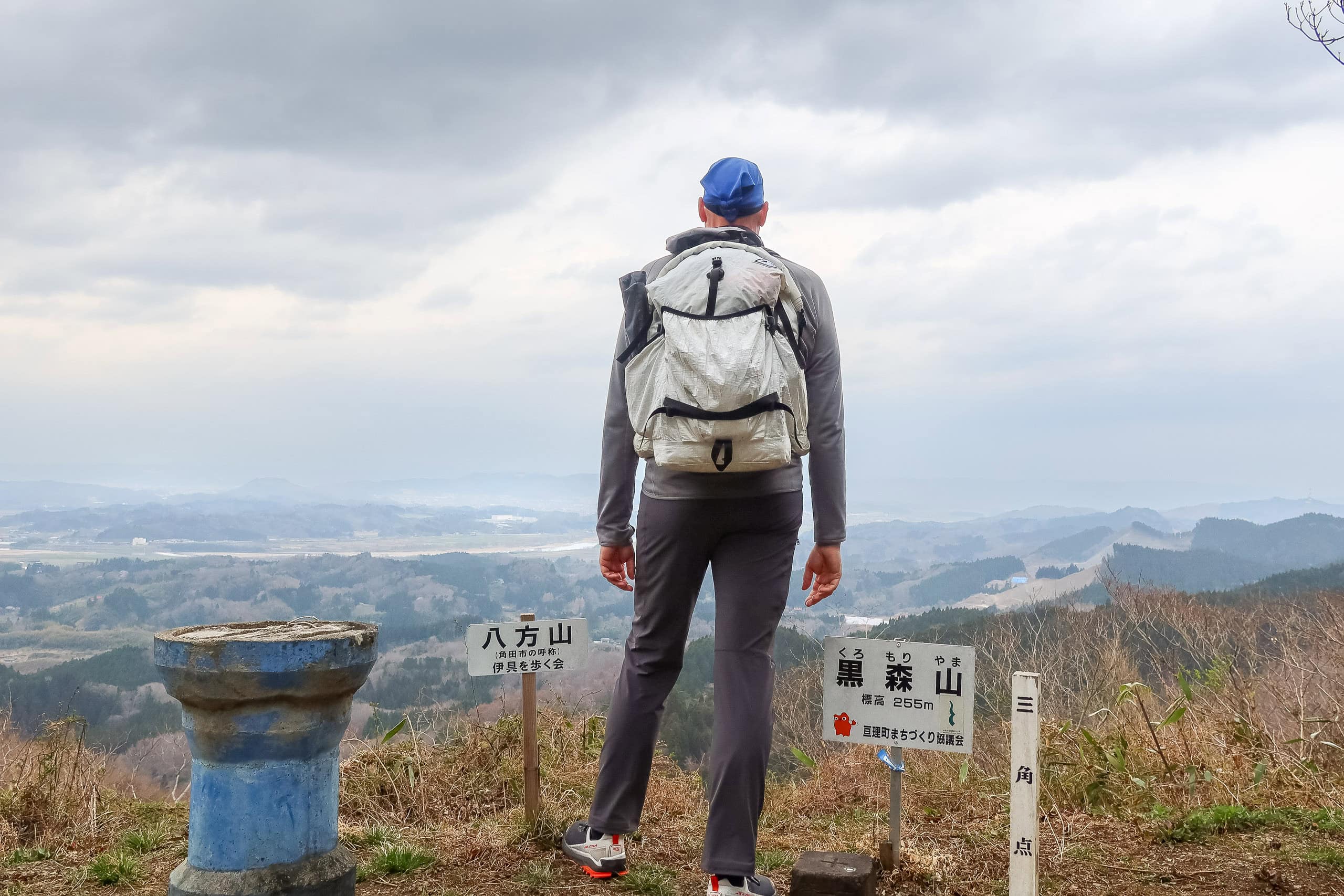
It was supposed to start raining in the afternoon, and, this time, we expected the forecast would be correct, as the cloudy sky since the morning was getting darker.
At the same time, we had benefited from a much lower temperature than yesterday and no danger of sunburn under the gloomy sky—a tradeoff between good views and a non-sweating, comfortable walk.
But at around 2:15 pm, we finally felt slight raindrops on our faces. Looking down below the mountain, we found rain fogs covering the ground and blocking views. Luckily, the leafless tree parts were over a while ago, and we had a natural rain shield of evergreen trees. So, we kept walking faster without our rain jackets on.





Since the trailhead of Mt. Shinzan, at the entire time, there had been no part we needed to be extra careful to pass through… until we finally started going down from the mountains. At the head of the final downhill, a big white sign plate with scarlet letters of “DANGER!!” “slippery” waited for us, and the same warning was also on the MCT official map. Behind the sign, the ridgeline suddenly disappeared. The whole mountainside was gone and left an enormous quarrying hole in front of us. From here, the trail sharply went down along the quarry’s edge.
We were so glad the rain was not hard. Otherwise, it would be hazardous here to almost slide down, impossible to “walk down,” the slippery, sharp slope, relying only on a rope attached to the trees.




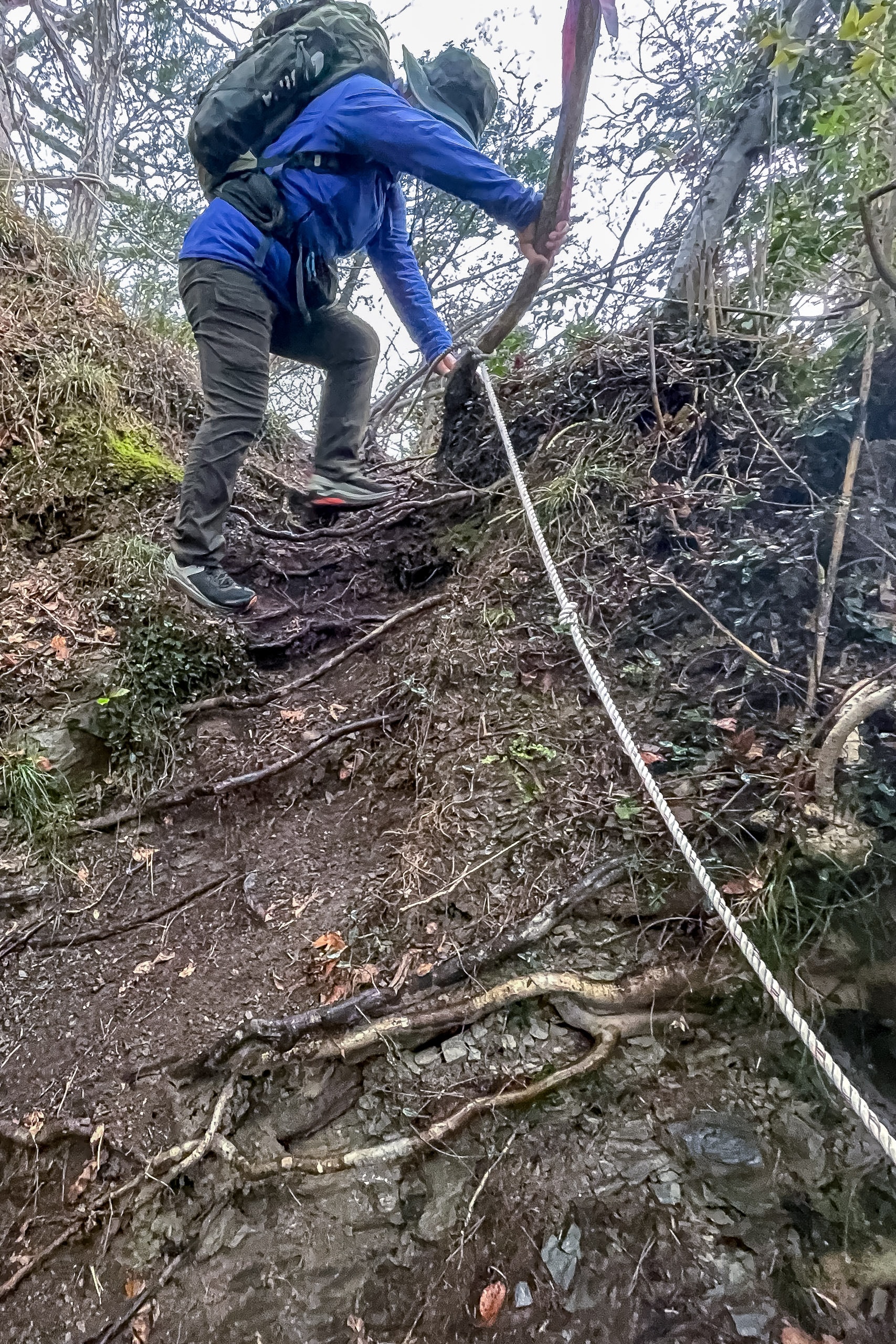
After we managed through this sudden physical challenge, the trail conditions of the rest of the parts returned to gentle mode. The MCT route gradually lowered its heights in the serene, misty cedar tree forests.

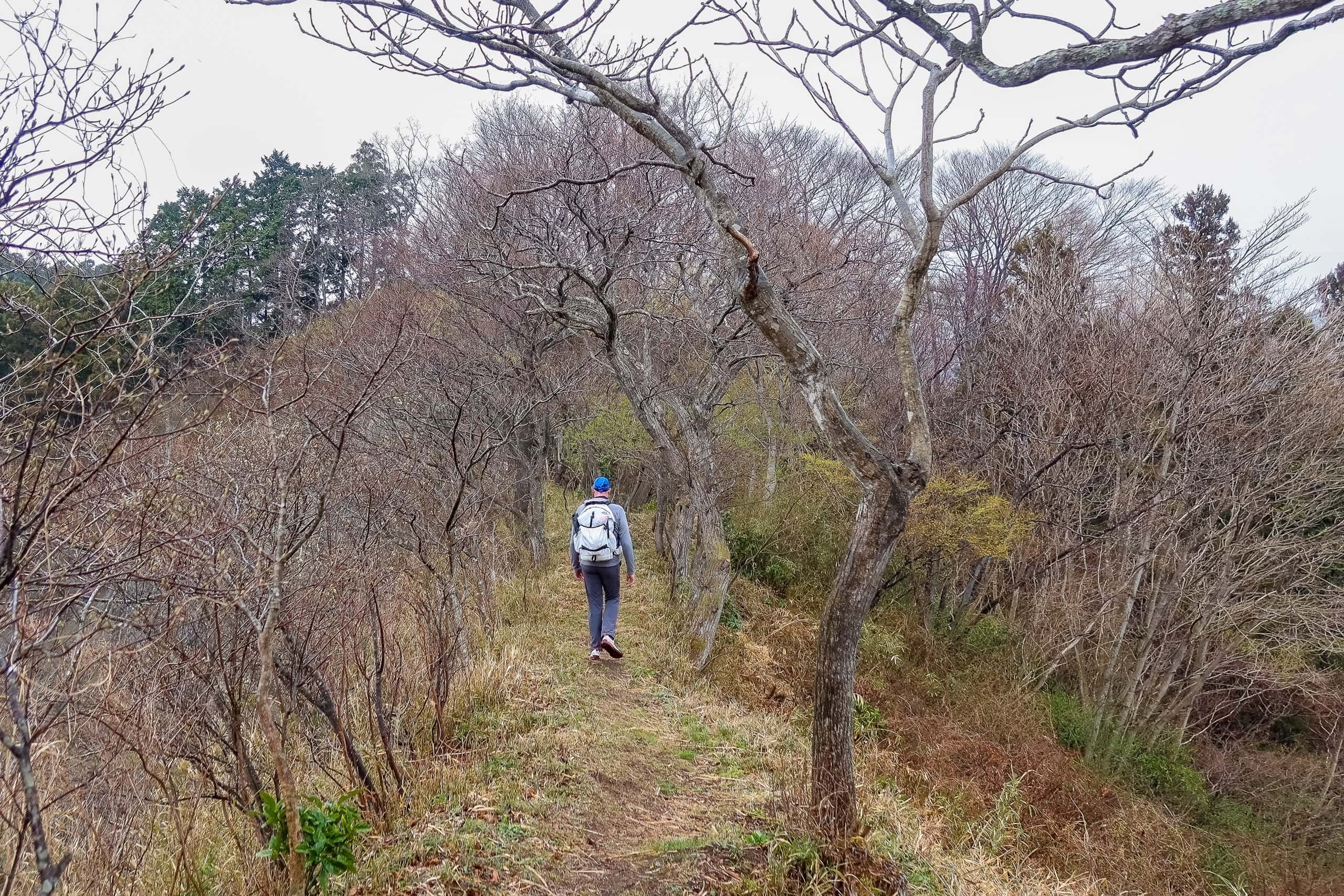

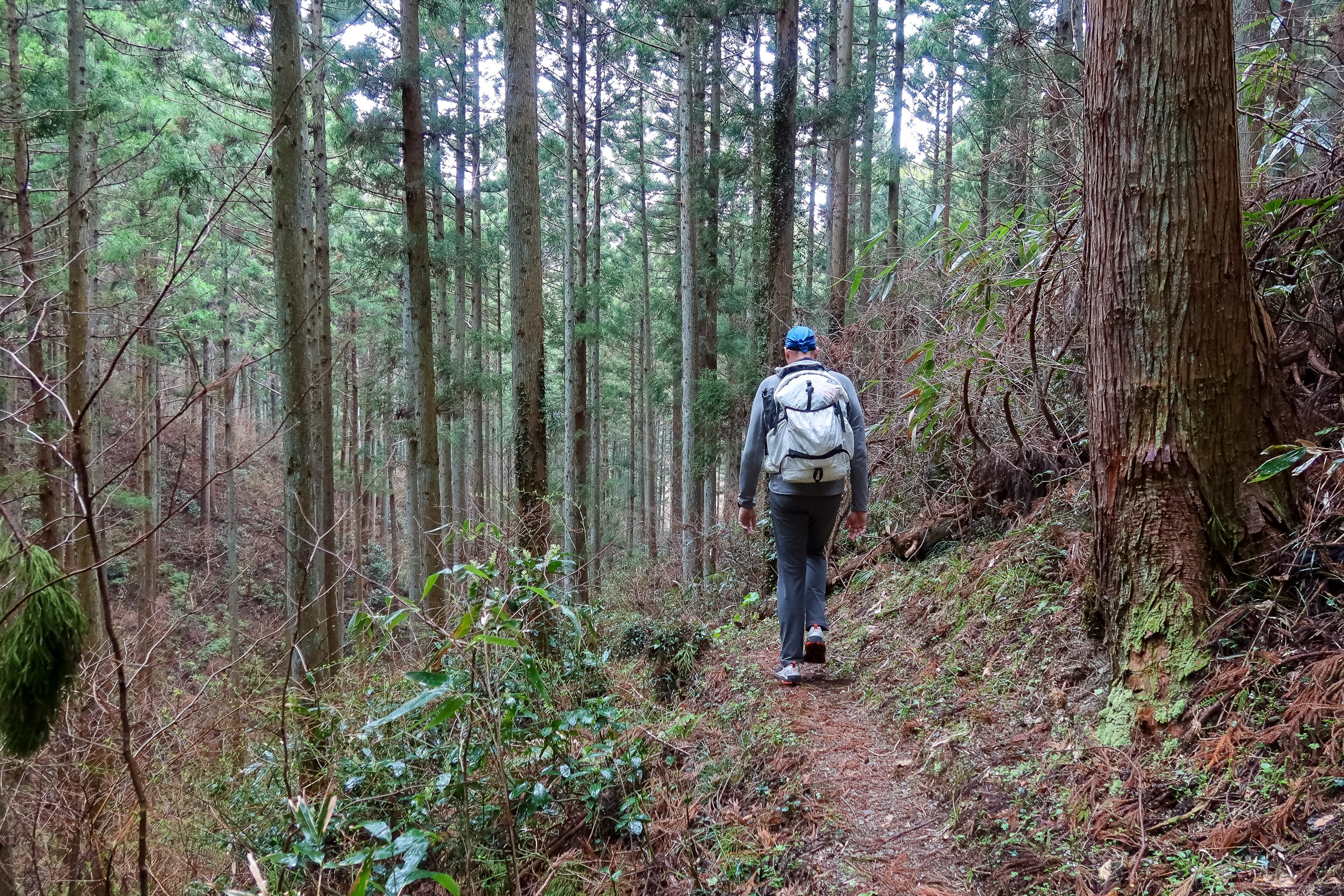

We exited from the Watari Horst mountains’ traverse through the other trailhead. We realized we had crossed the two-towns boundary somewhere in the mountains without noticing it, of course, and now in Watari town 亘理町.
Checking on the map later, the town border was crossing around the midpoint of the car road walking part before Mt. Shihō.
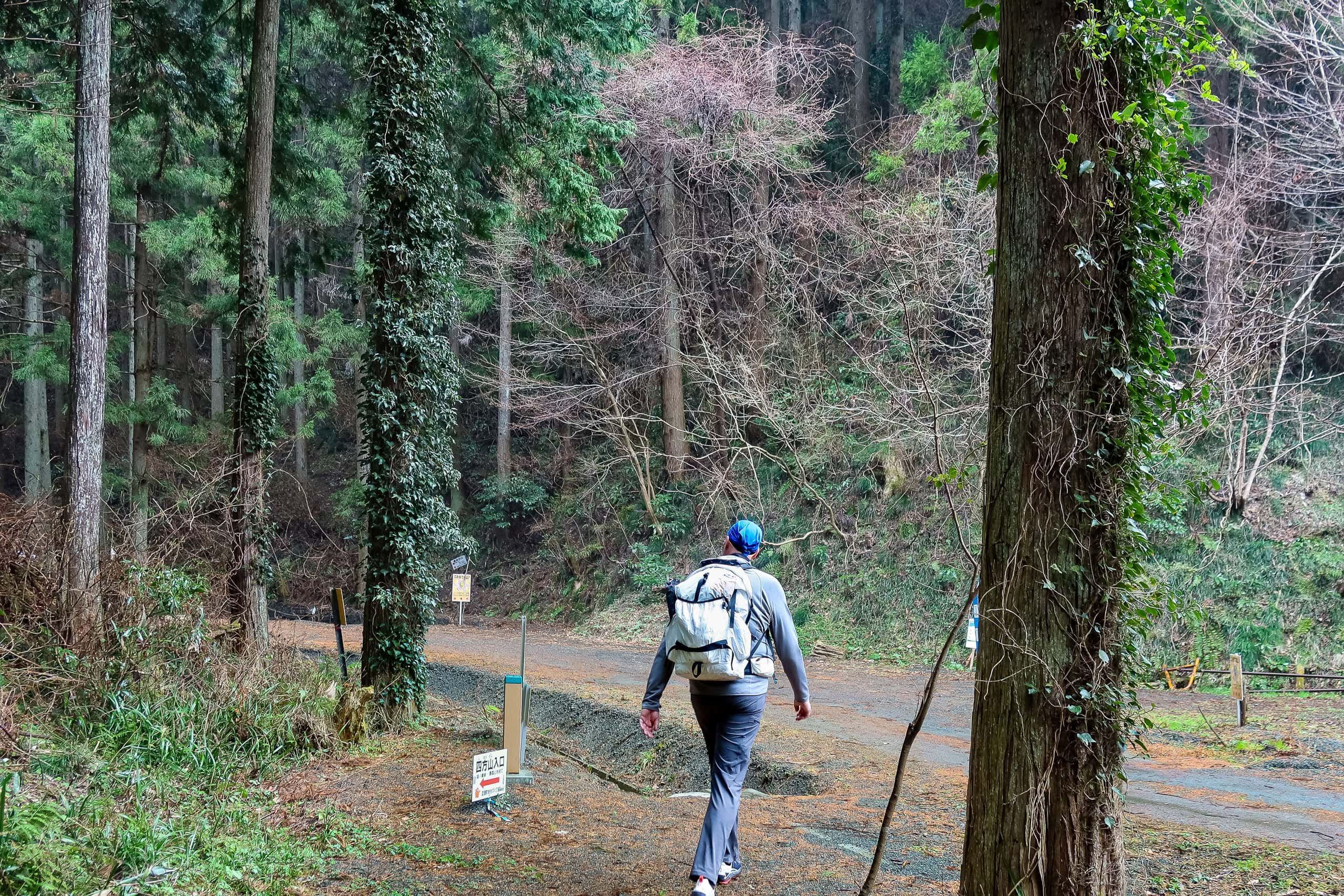




While Erik thought we should be allowed, in this rain, to make a shortcut to get to our goal, I persisted in following “the correct route” shown on the official map, even though we had to make a seemingly pointless big detour around a residential area only to find nothing notable along the way… Well, there was a junior high school and an old temple whose main hall was under a major roof repair and covered with blue construction sheets.
Even after this time, my stubborn obsession with walking on the “correct” route would continue for a while until I finally learned, after so many lessons, that it was no use trying to follow the exact way shown on the map in many areas.
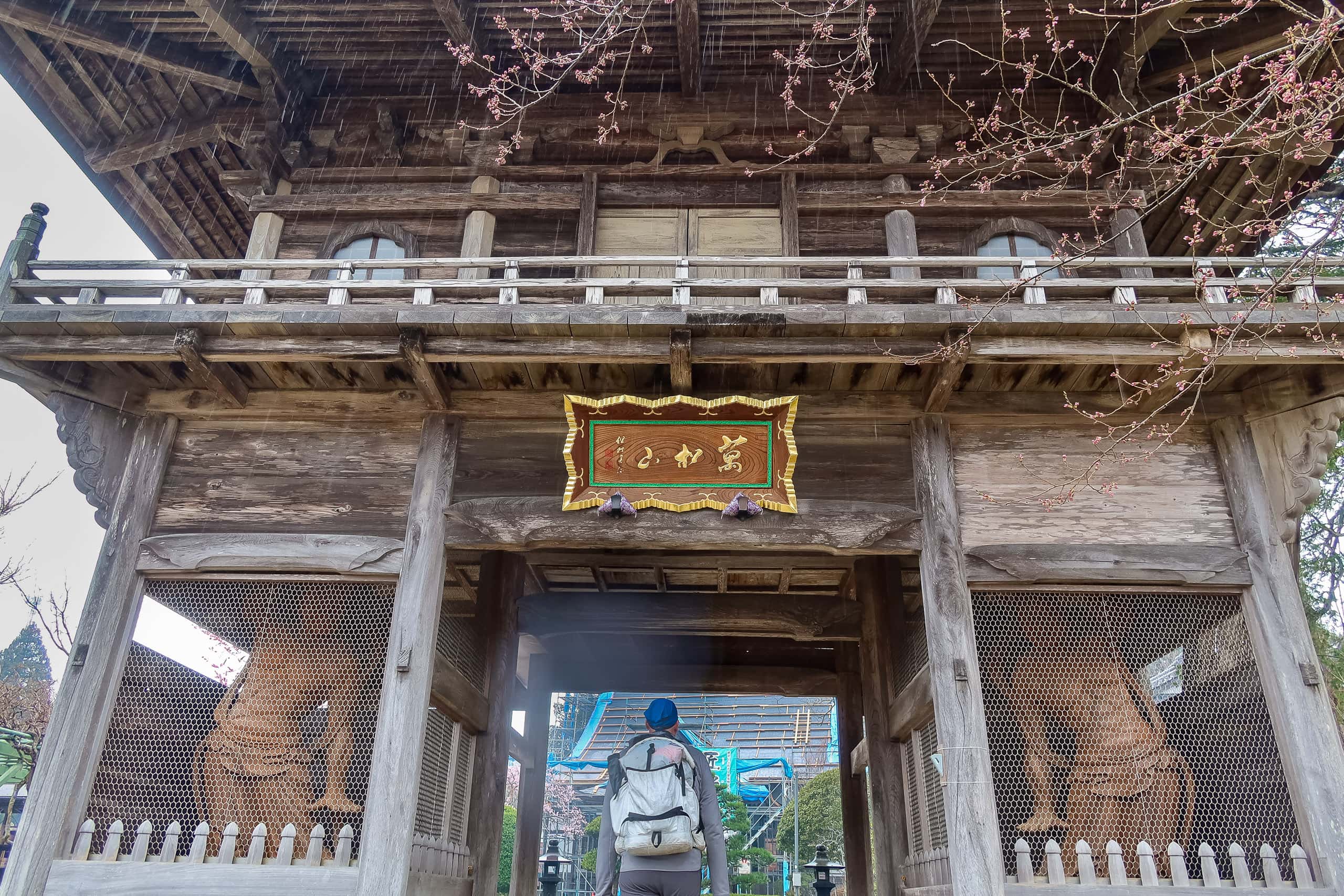

The Horst traverse was very enjoyable, and we wanted to give applause to whoever picked it up for making the MCT route. But we had not seen the point of many of the residential areas we walked so far and wondered why the route line was drawn there—no offense, but, honestly.
We did recognize some local historical/cultural sites and seasonal, beautiful sights along the way, yet, like what we were walking through in the rain now, some zig-zag detours didn’t make much sense to us why they had to run in these directions.
The rainfall was not hard enough to wear rain jackets, so we kept walking through the quiet, ordinary neighborhoods.
While I didn’t feel any pain in my feet on the mountain, these last few kilometers of walking on concrete streets brought the same foot pain I got yesterday, probably because we were carrying all gear in our backpacks today, compared to much lighter-weight packs yesterday.
Though our initially set goal, Okuma station 逢隈駅, was still about 6 km away, we decided to call it a day at a big grocery store by a former castle site turning a shrine.
After we got food at the store for our dinner tonight, we looked around to see if there was a taxi. None. So, we walked to a place with the highest chance of finding cabs…Watari station 亘理駅, with no luck to our slight hope that we might find one on the way.
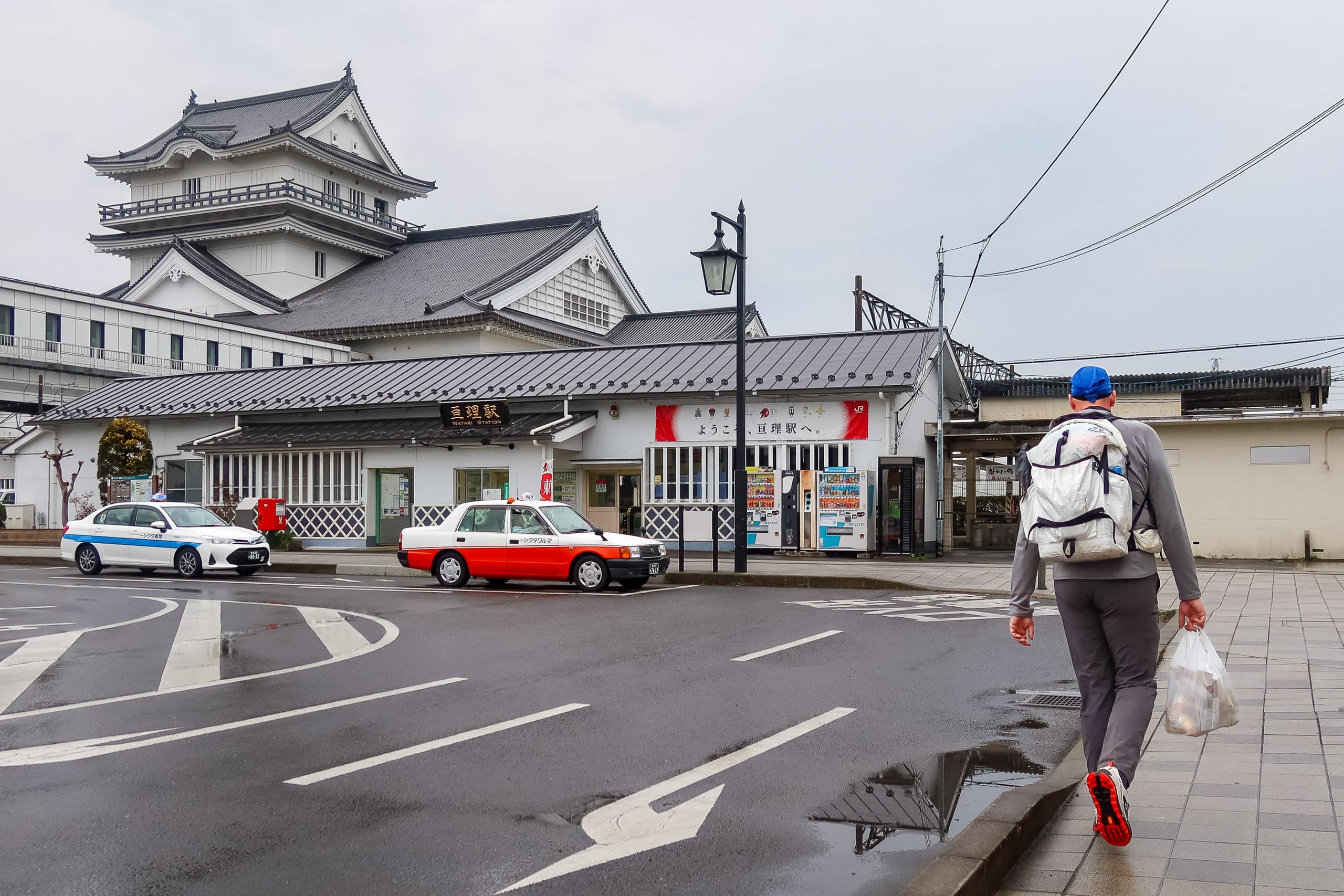
Our hotel for tonight was located by the ocean, far away from the MCT route. The all-ocean view rooms should have been the nice end of the day… only if the weather was not as sulky as now. But whatever views from our room window didn’t matter, as we picked this hotel for its excellent public onsen (hot springs), including an outdoor one on the terrace. After daytime drop-in visitors are gone, the onsen becomes all hotel guests’ during nighttime.
The only slight inconvenience was that the onsen hotel was 7km away from the grocery store. So, it is not at all near the MCT route. Even taking this into account, it was unignorable for us to give our not-that-young-any-more bodies a little extra care every night to enable them to walk for 50 continuous days. Good rest and deep sleep are the keys… at least for me.
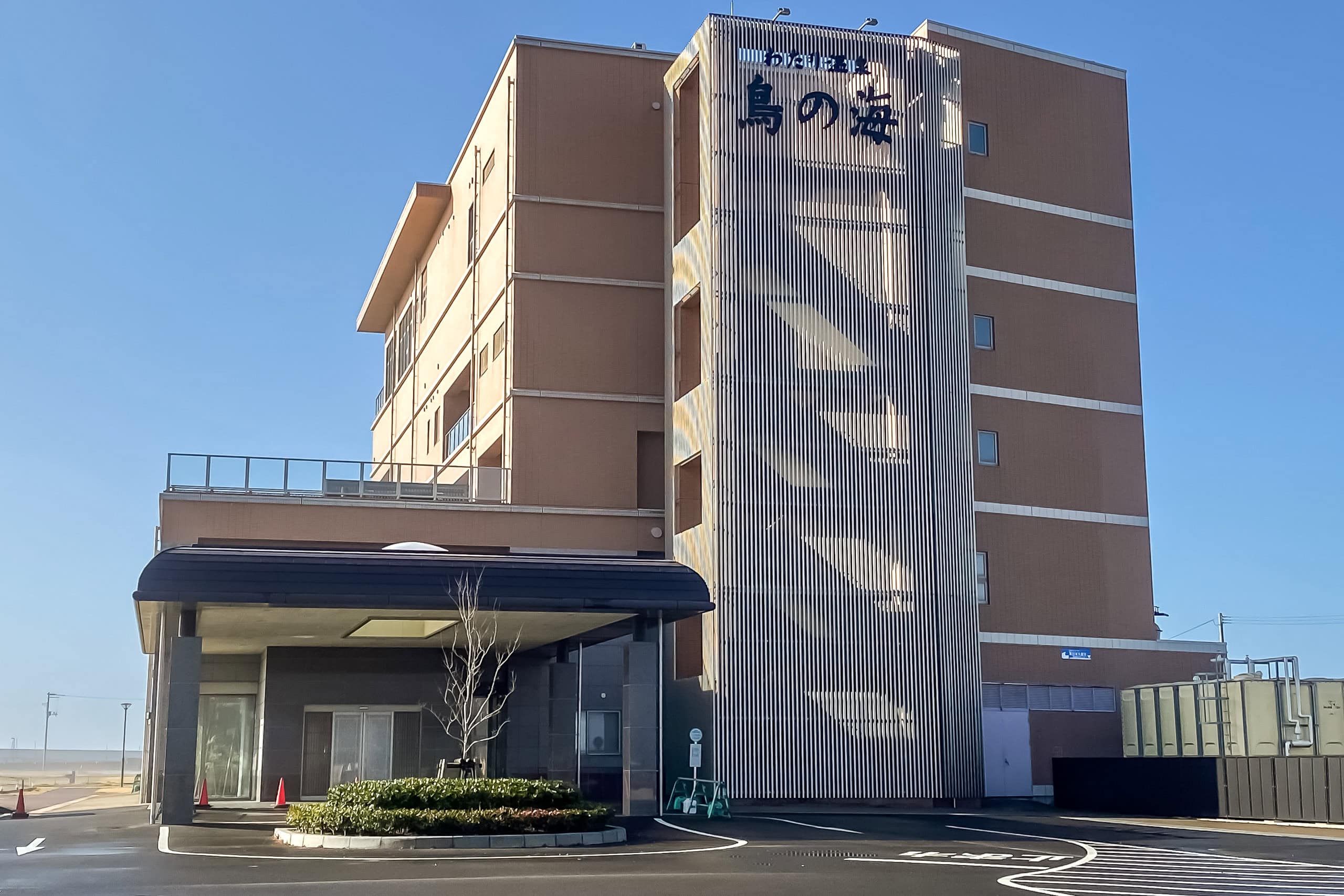
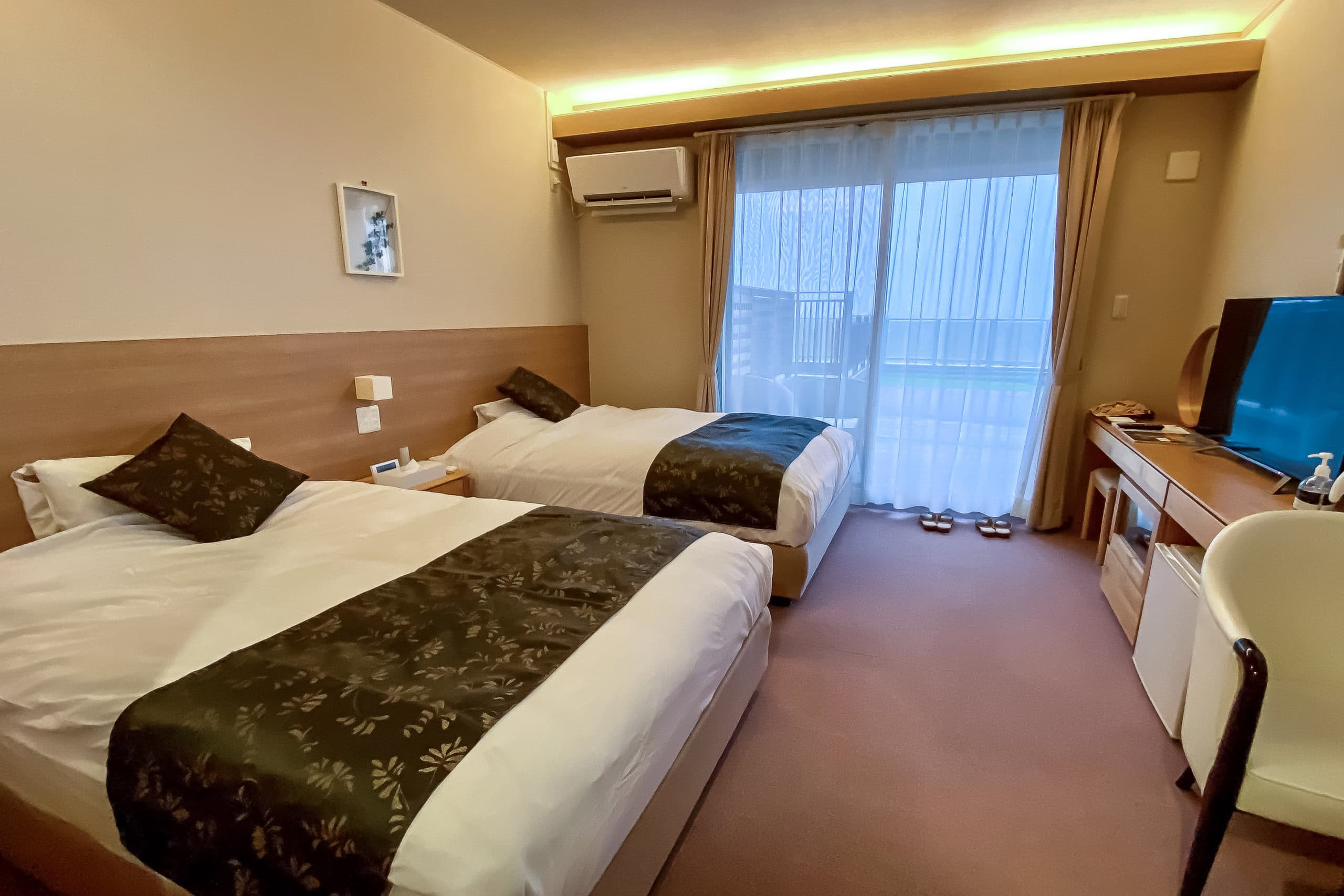
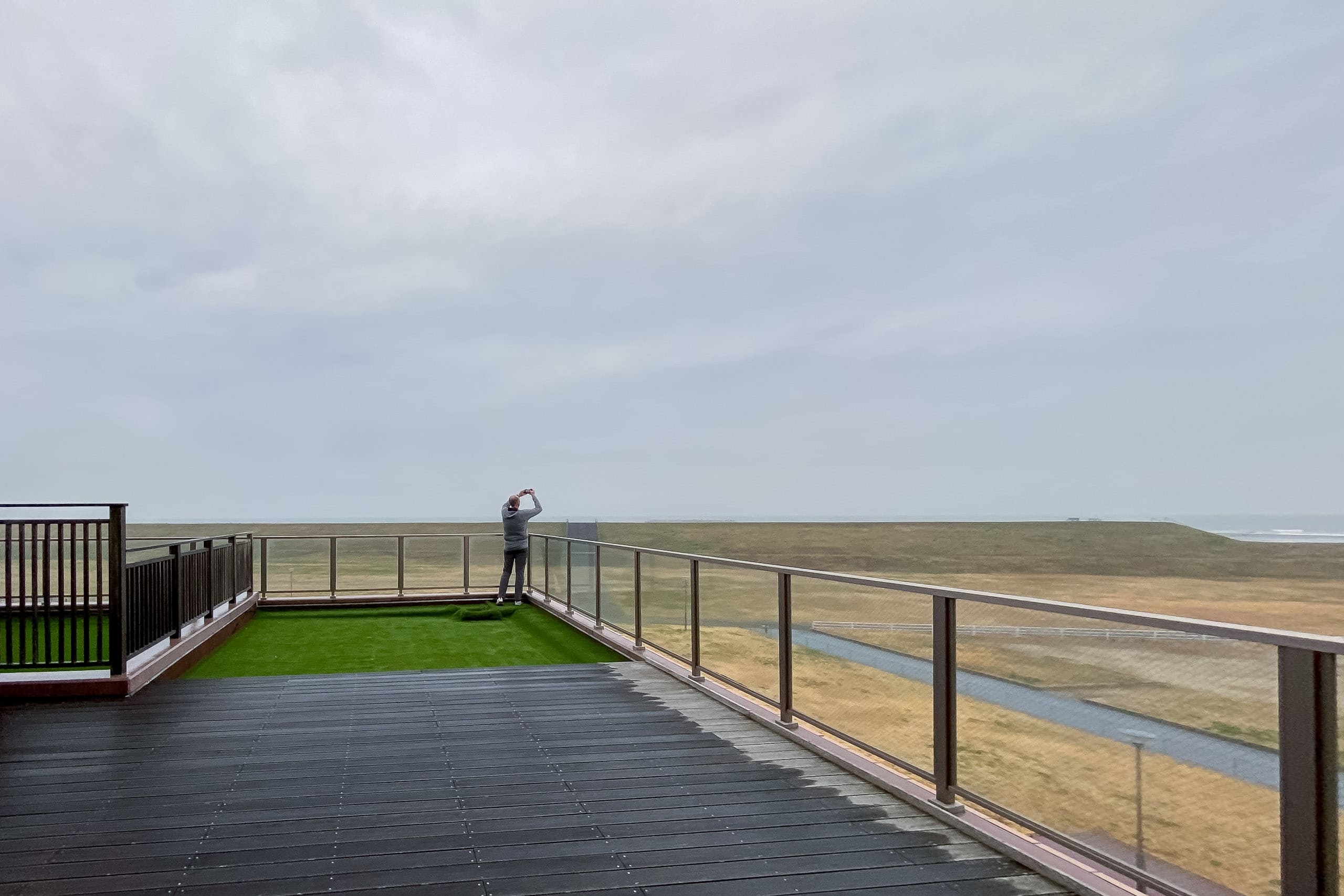

Although we were on unpaved trails with soft cushions of leaf molds most of the time, and our walking distance hardly reached 20km, I got seriously exhausted.
Watari Horst Mountains’ ridgeline stayed around 250m in altitude, not high at all. But when we checked our GPS track and saw the total elevation gain/loss, we were shocked; both gain and loss reached nearly 850m. We thought the 12 km-long trail was mostly flat and felt nothing strenuous. Still, we experienced numerical proof of how perceptible impacts accumulated minor ups and downs could have on our bodies at the end of the day.
Day 3 – MCT
| Start | Yamashita Station |
| Distance | 19.4km |
| Elevation Gain/Loss | 556m/549m |
| Finish | Watari Station |
| Time | 7h 40m |
| Highest/Lowest Altitude | 286m/ 3m |
Route Data
The Michinoku Coastal Trail Thru-hike : Late March – Mid-May 2021
- The first and most reliable information source about MCT is the official website
- For updates on detours, route changes, and trail closures on the MCT route
- Get the MCT Official Hiking Map Books
- Download the route GPS data provided by MCT Trail Club
- MCT hiking challengers/alumni registration



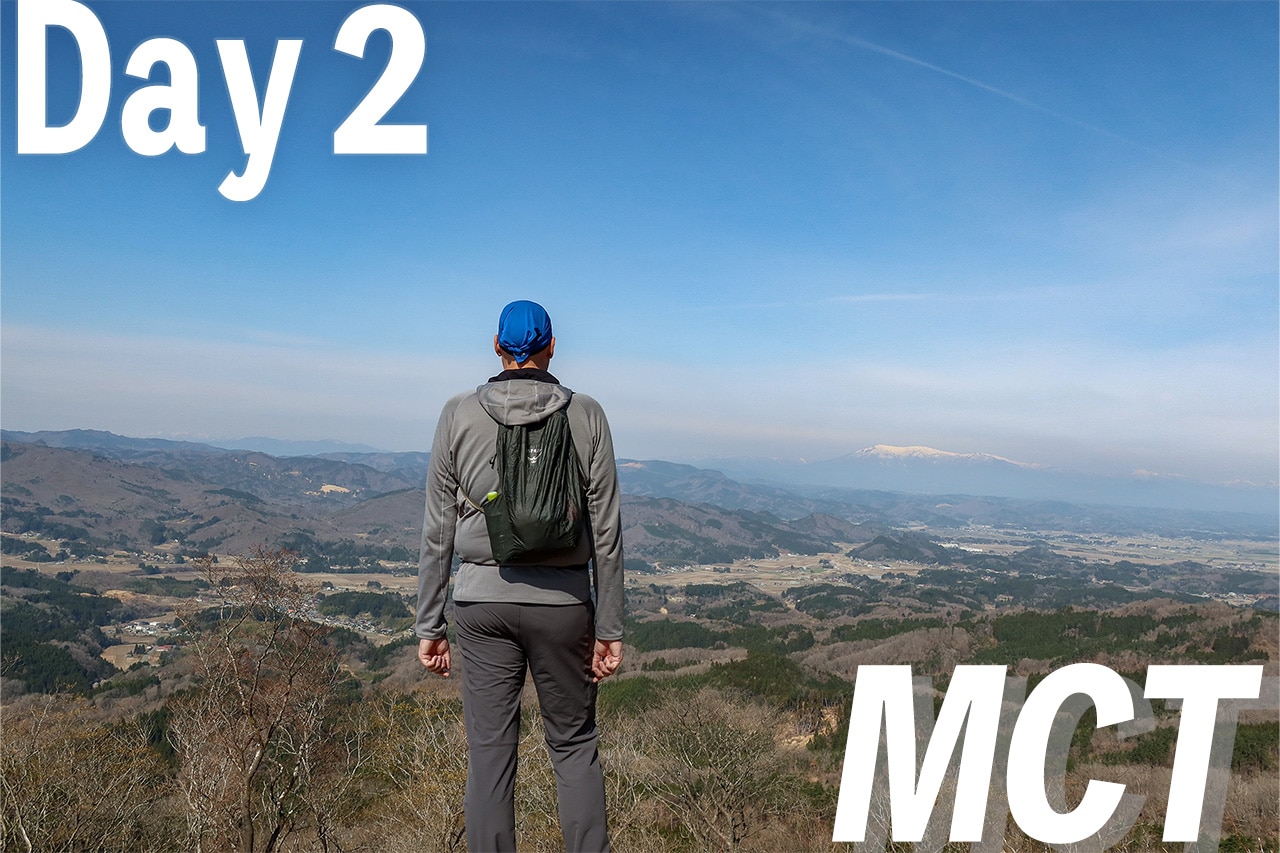
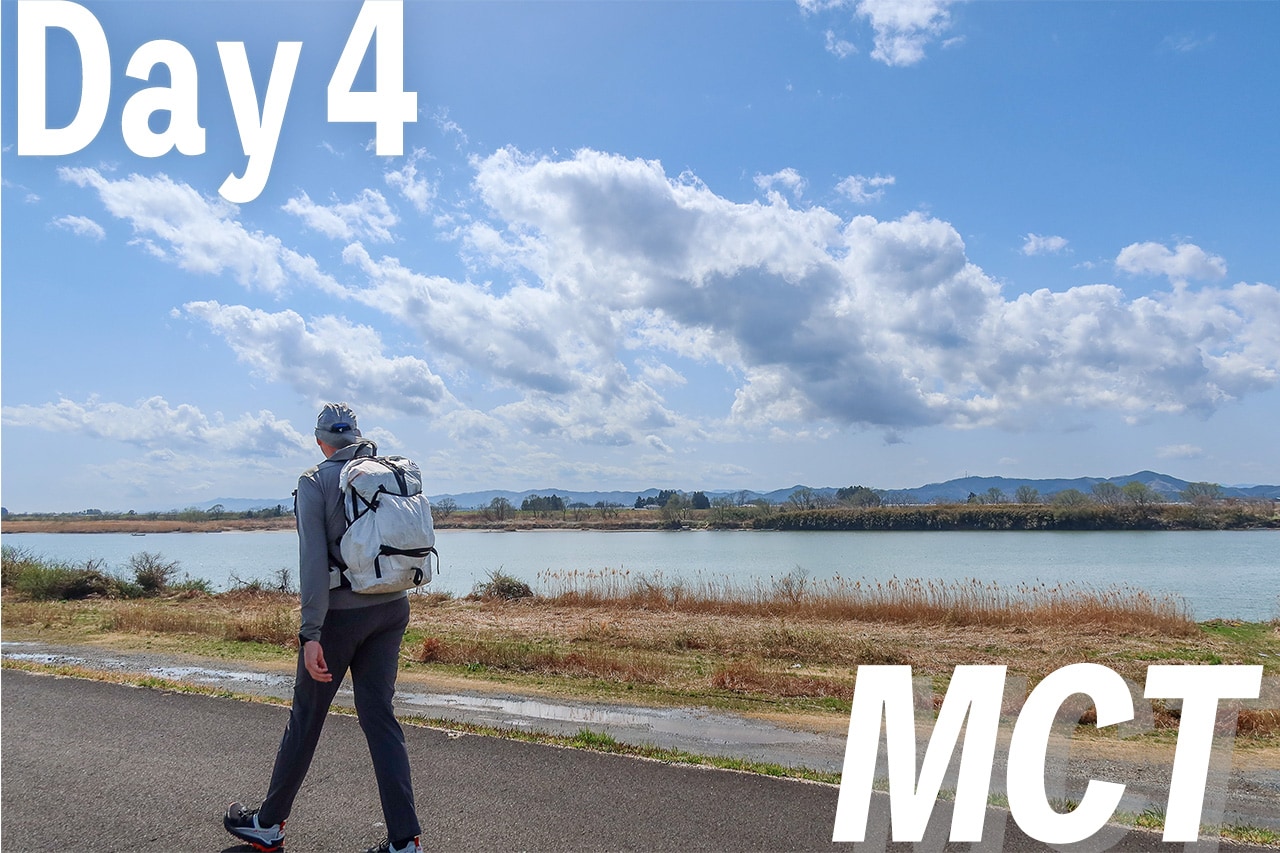
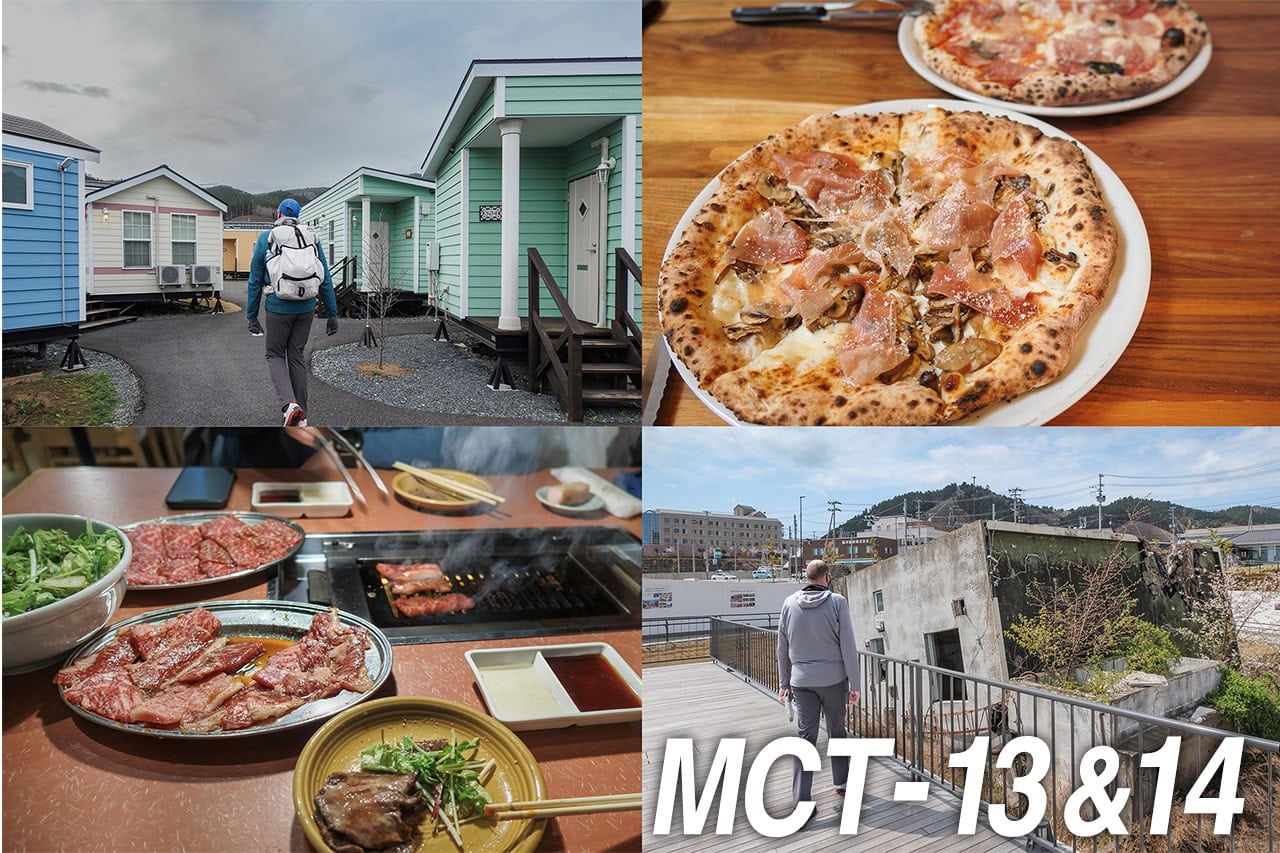

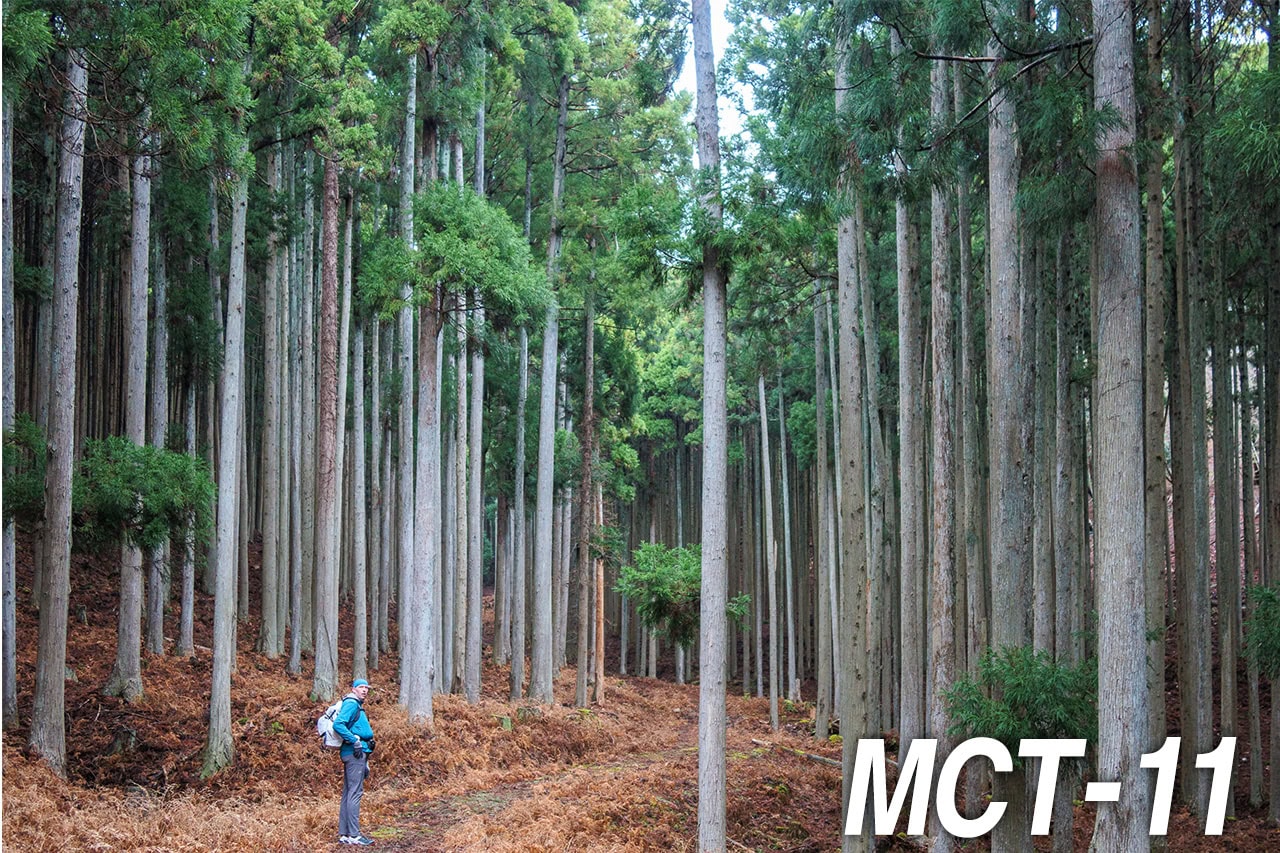
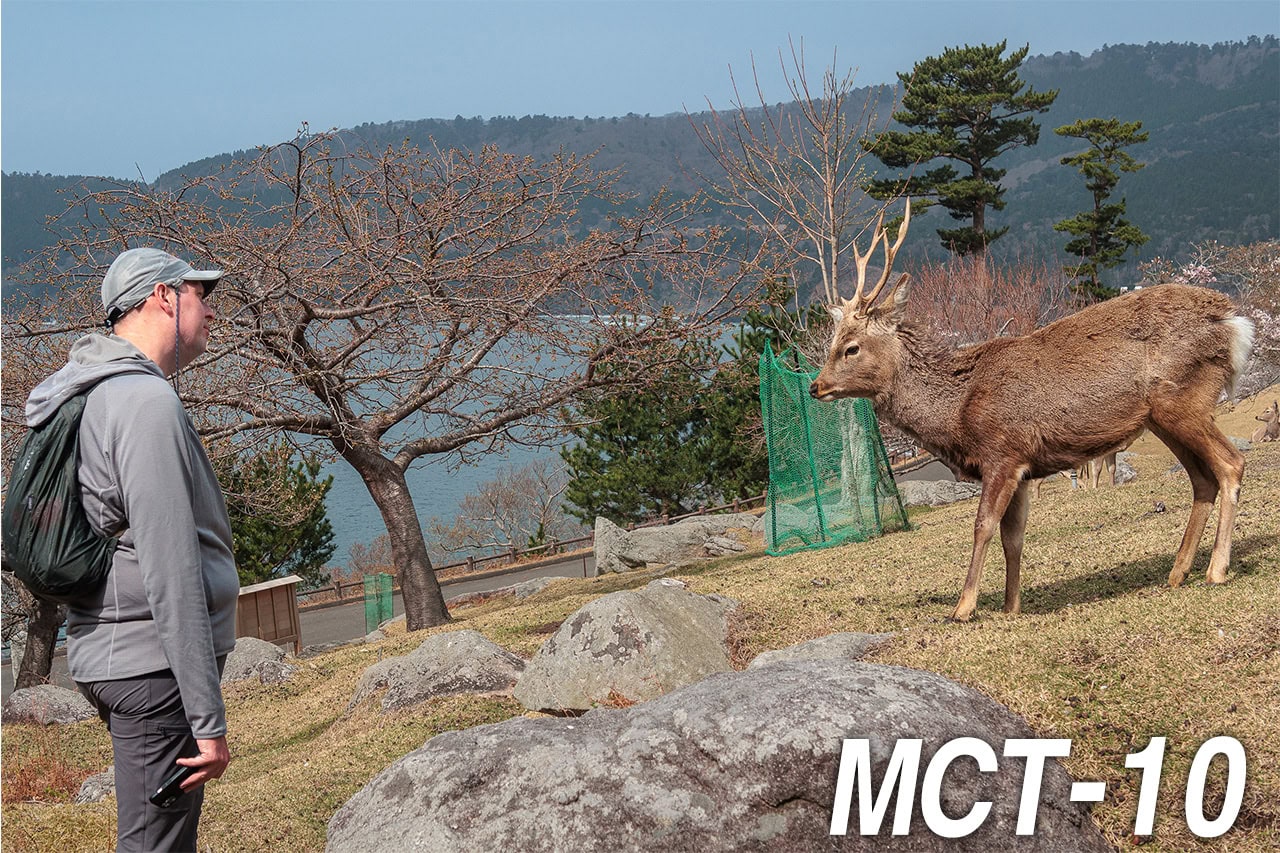
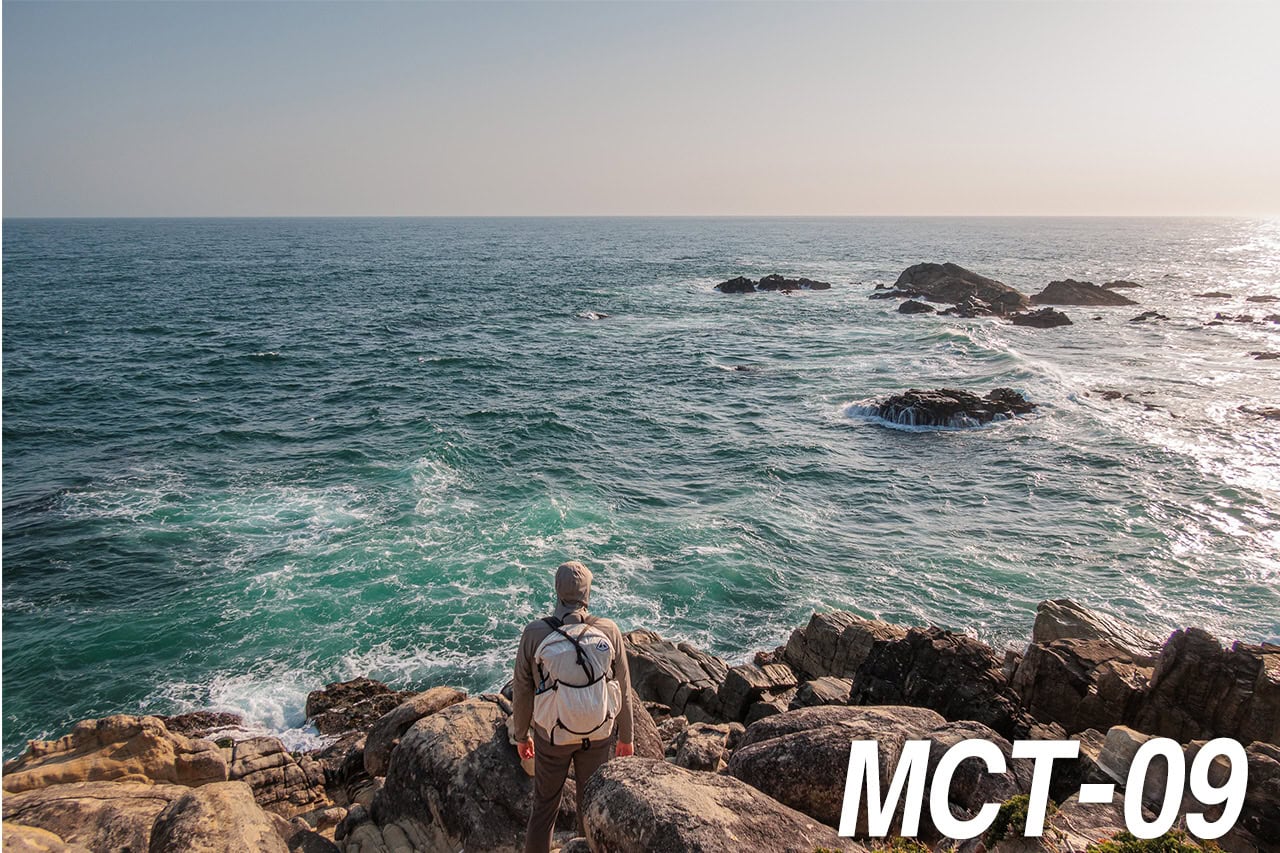
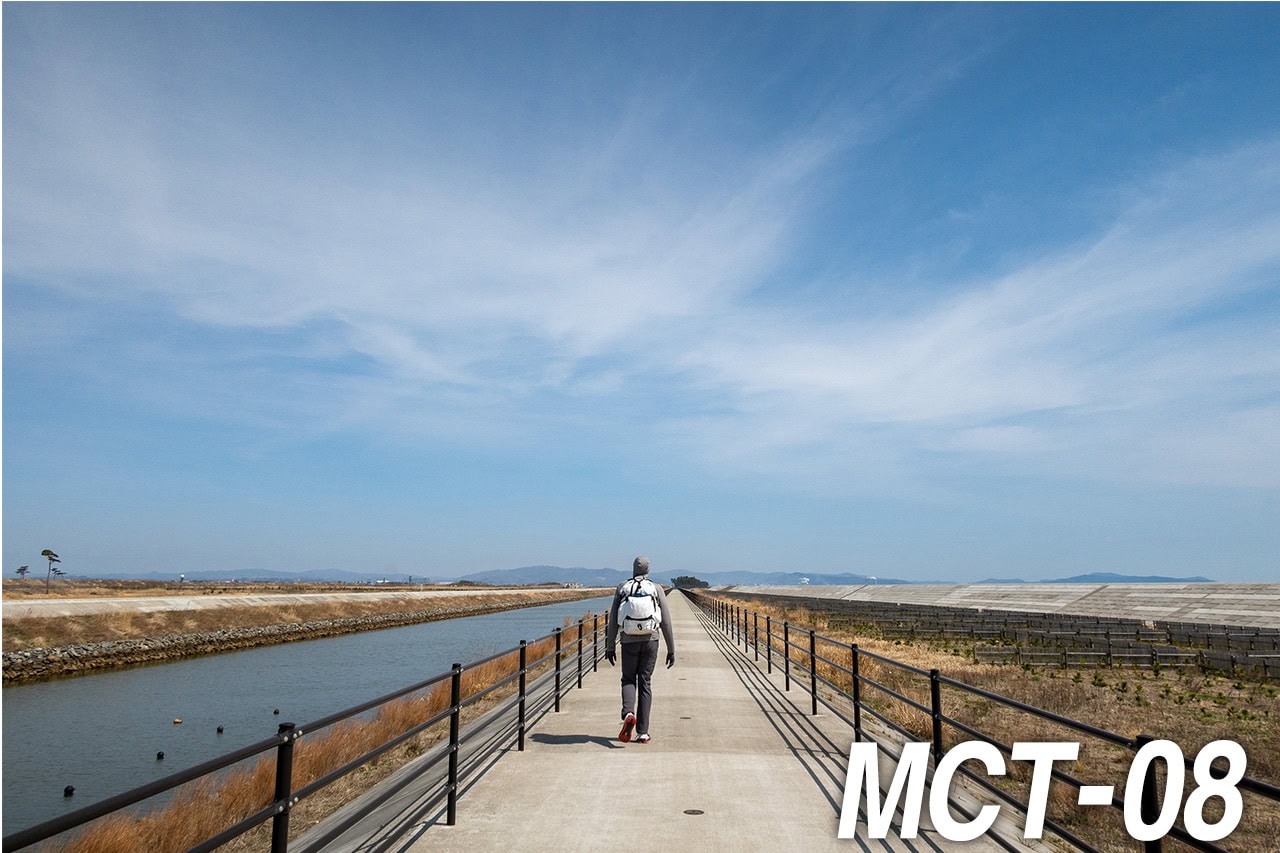
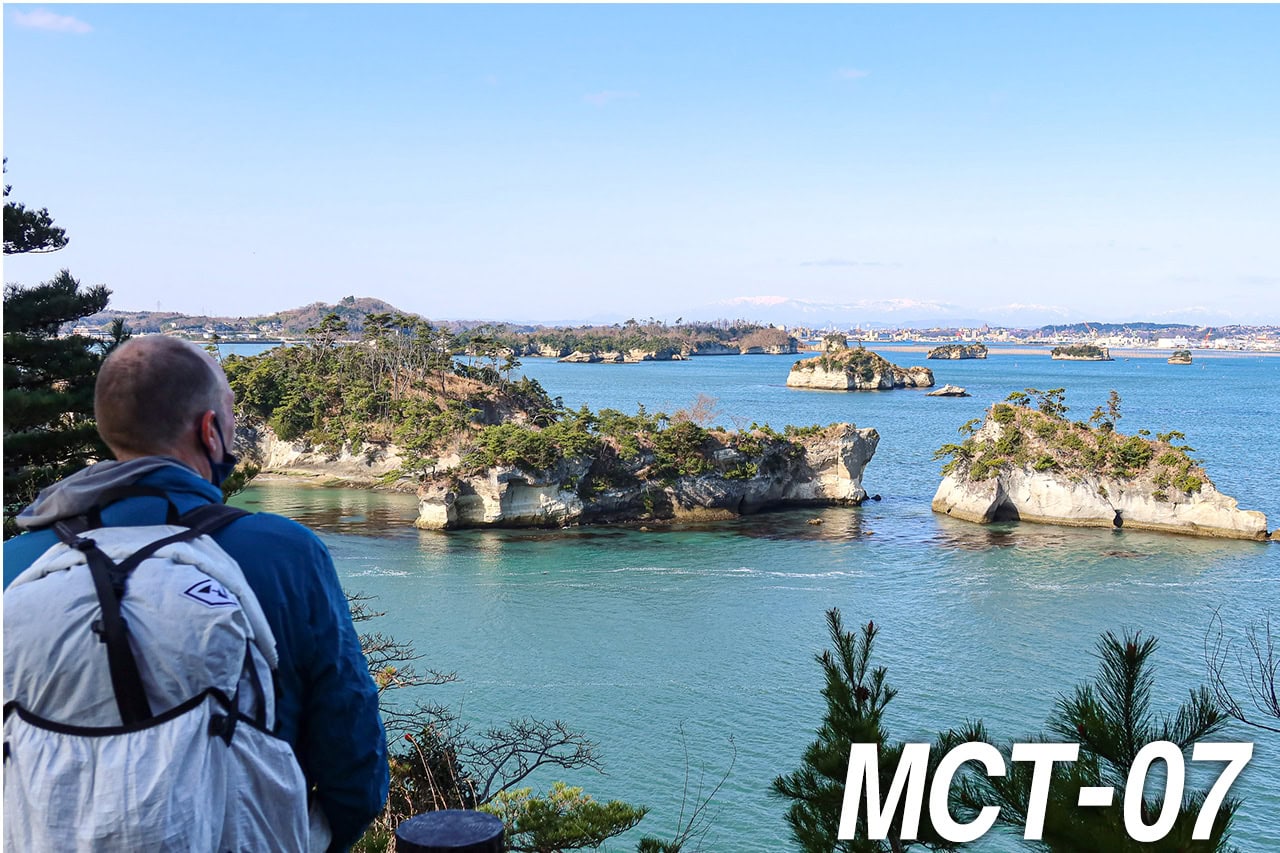
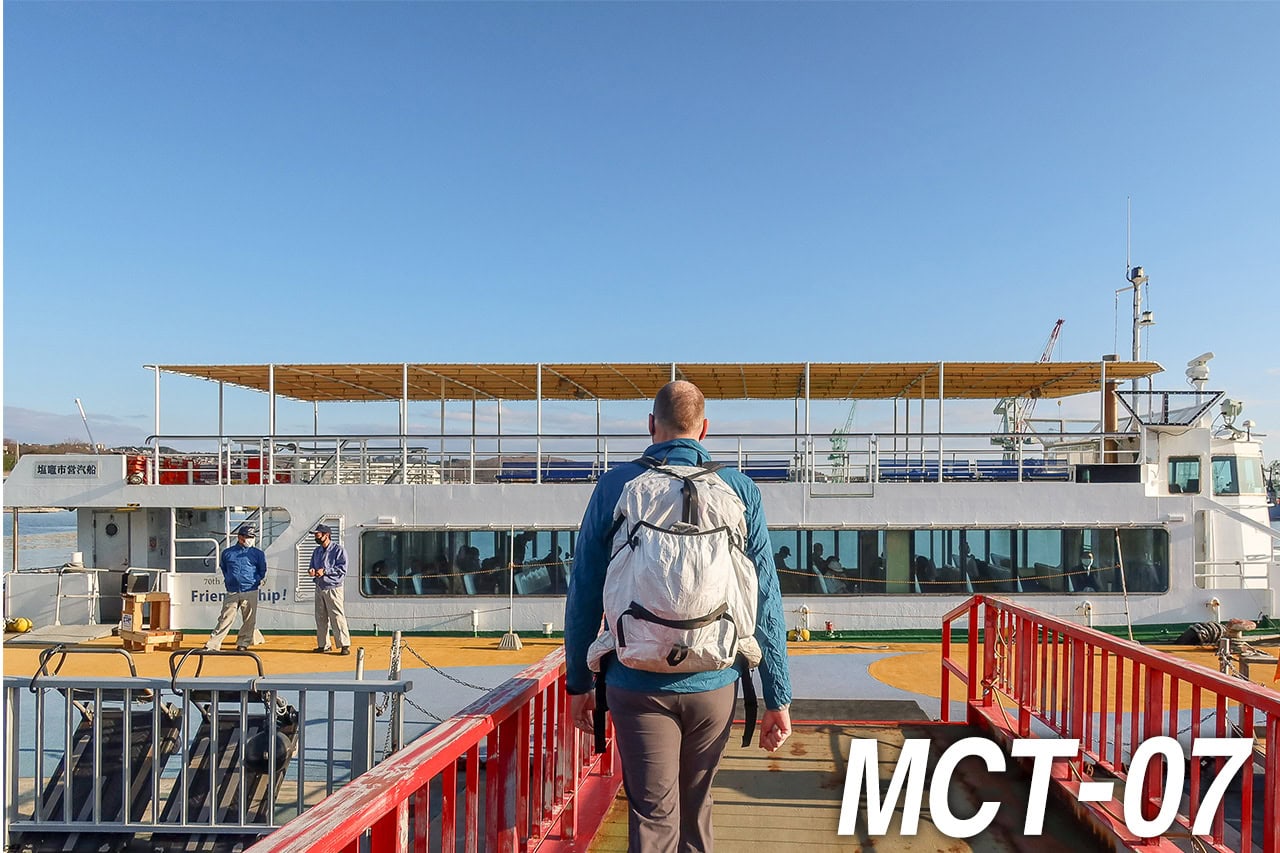
Comments